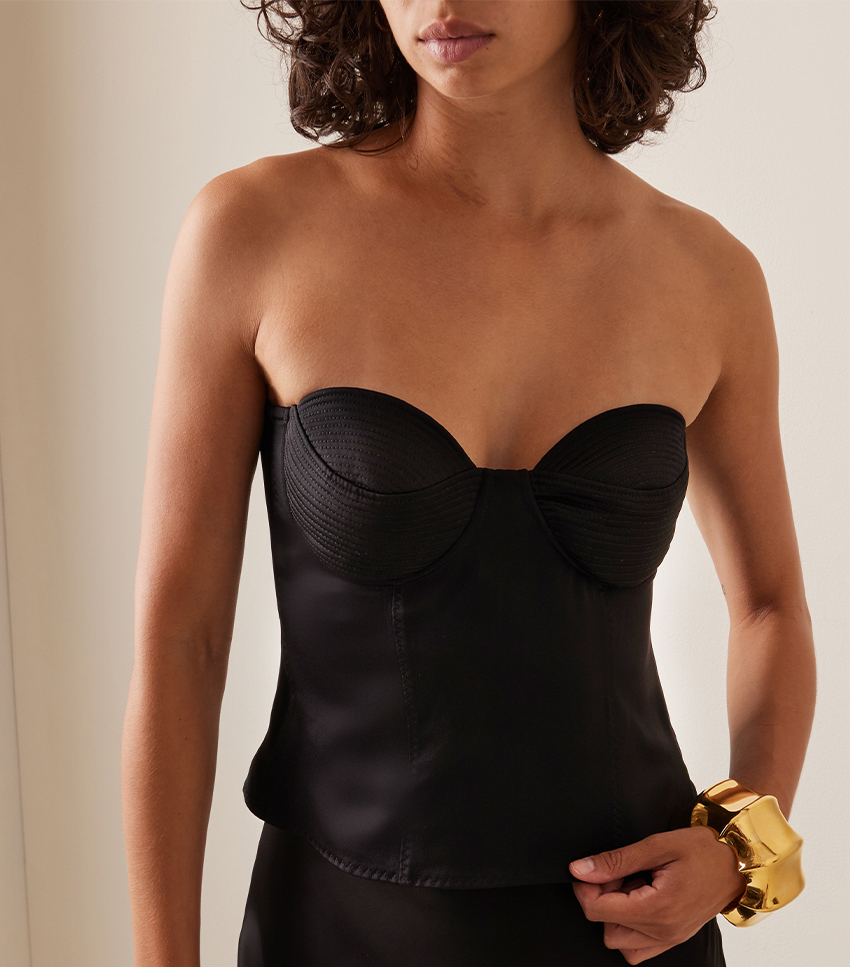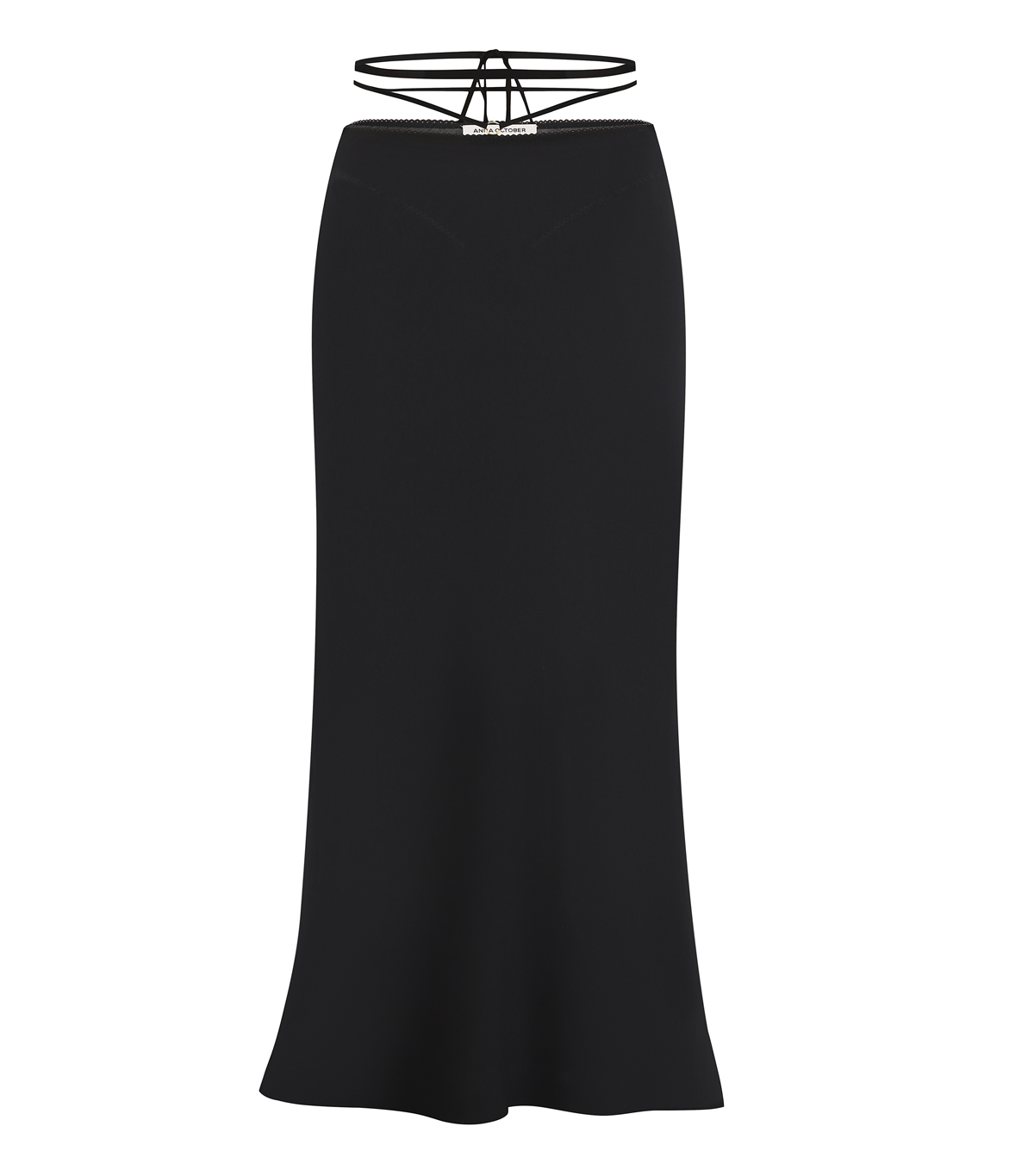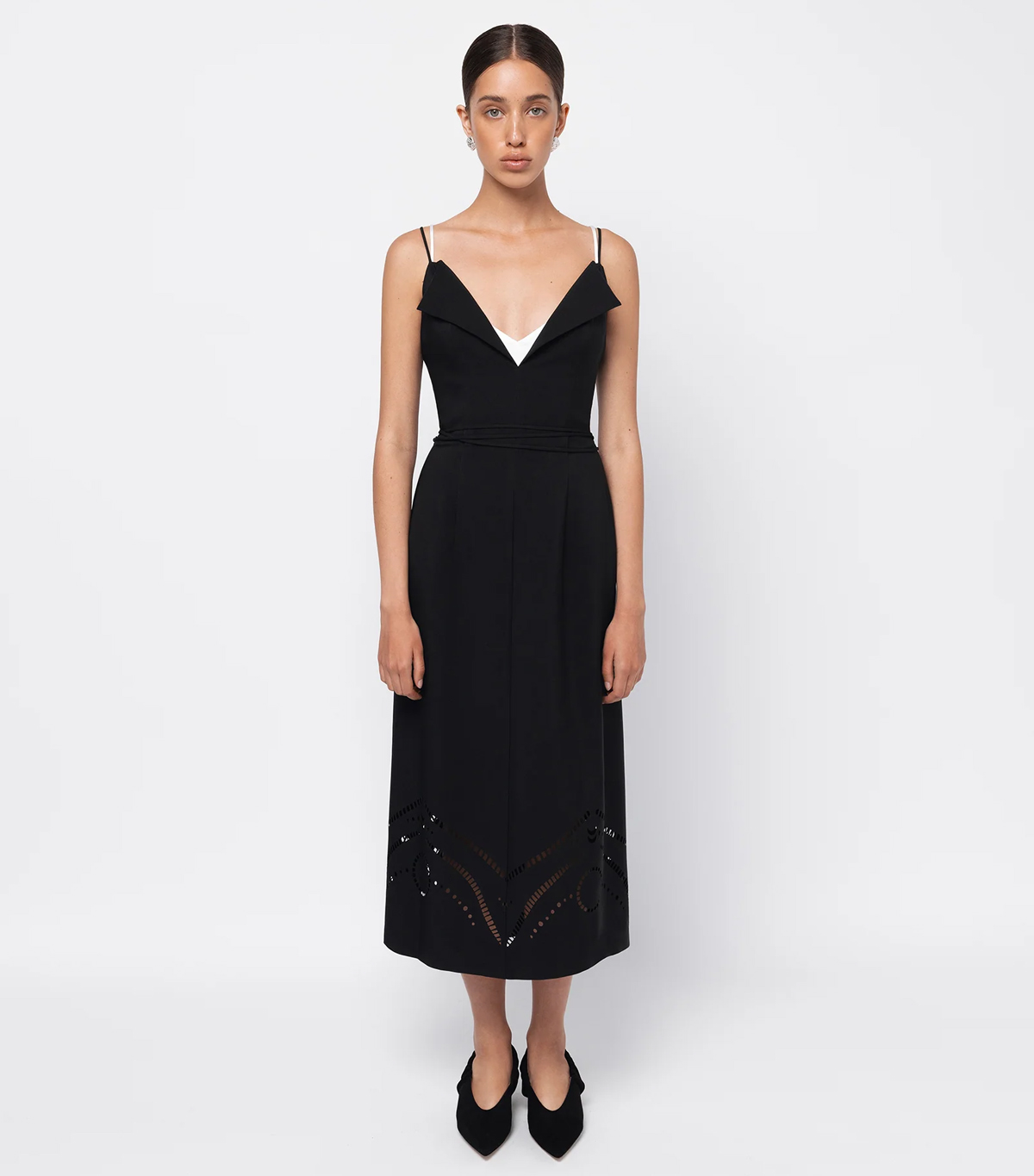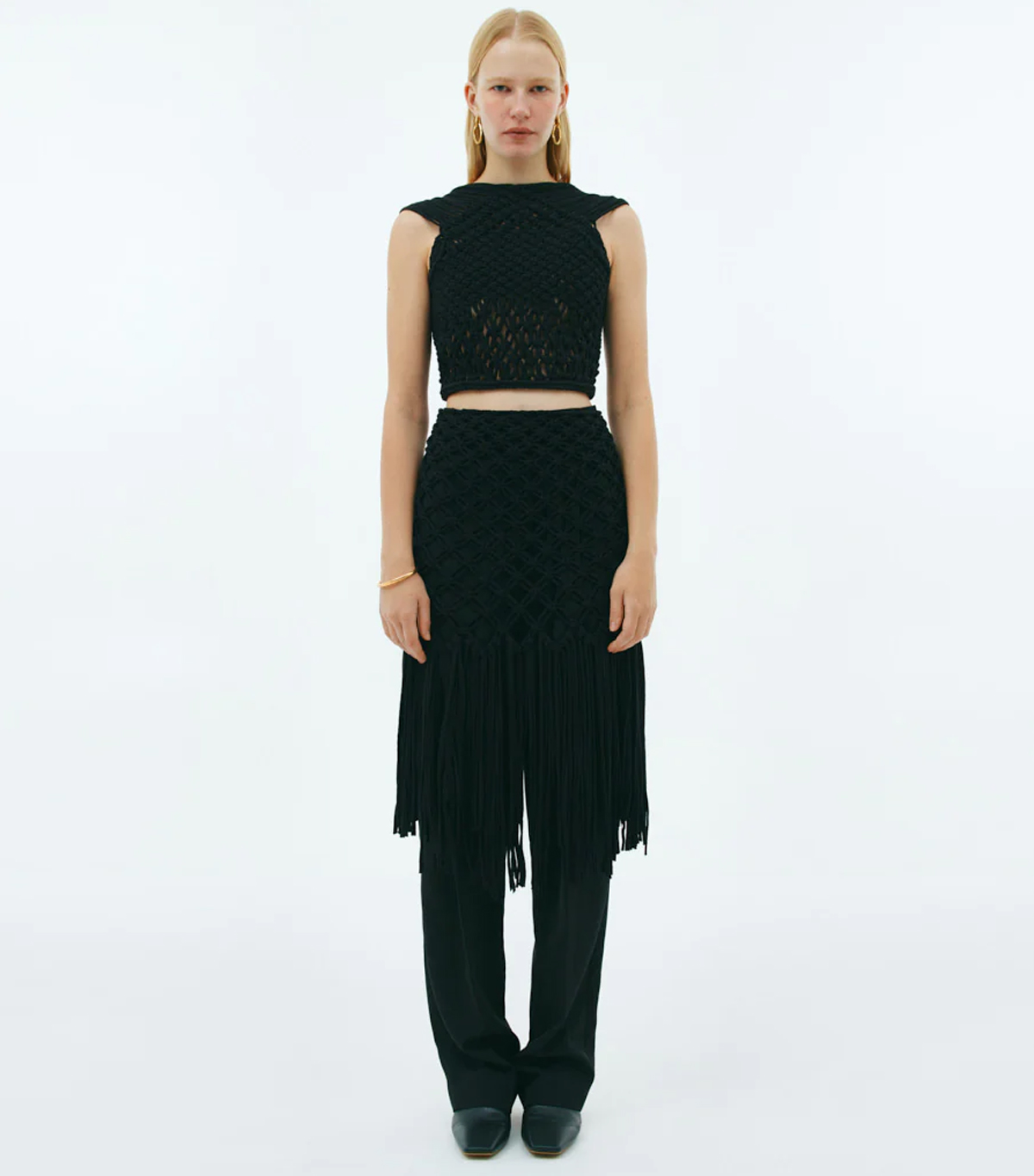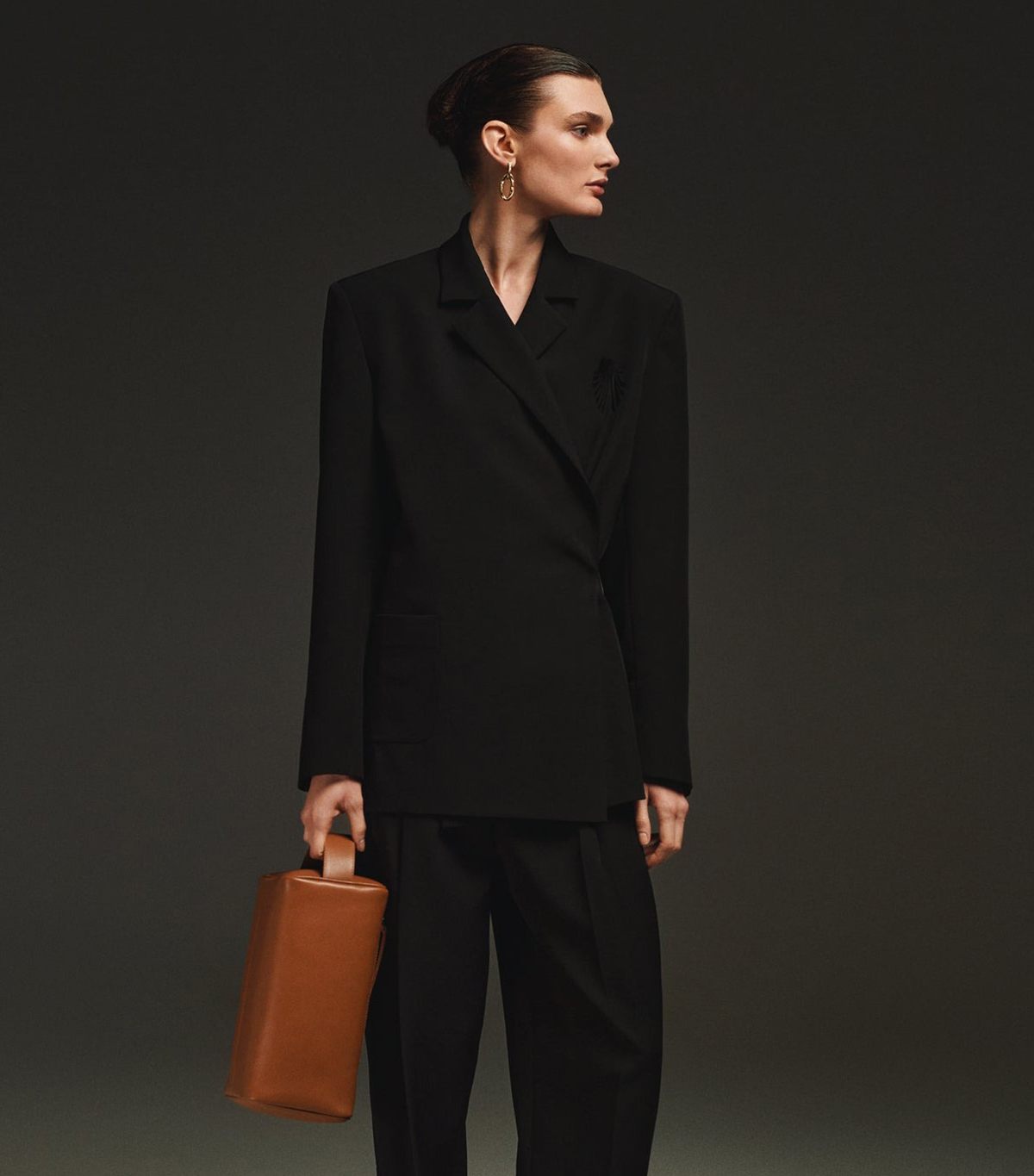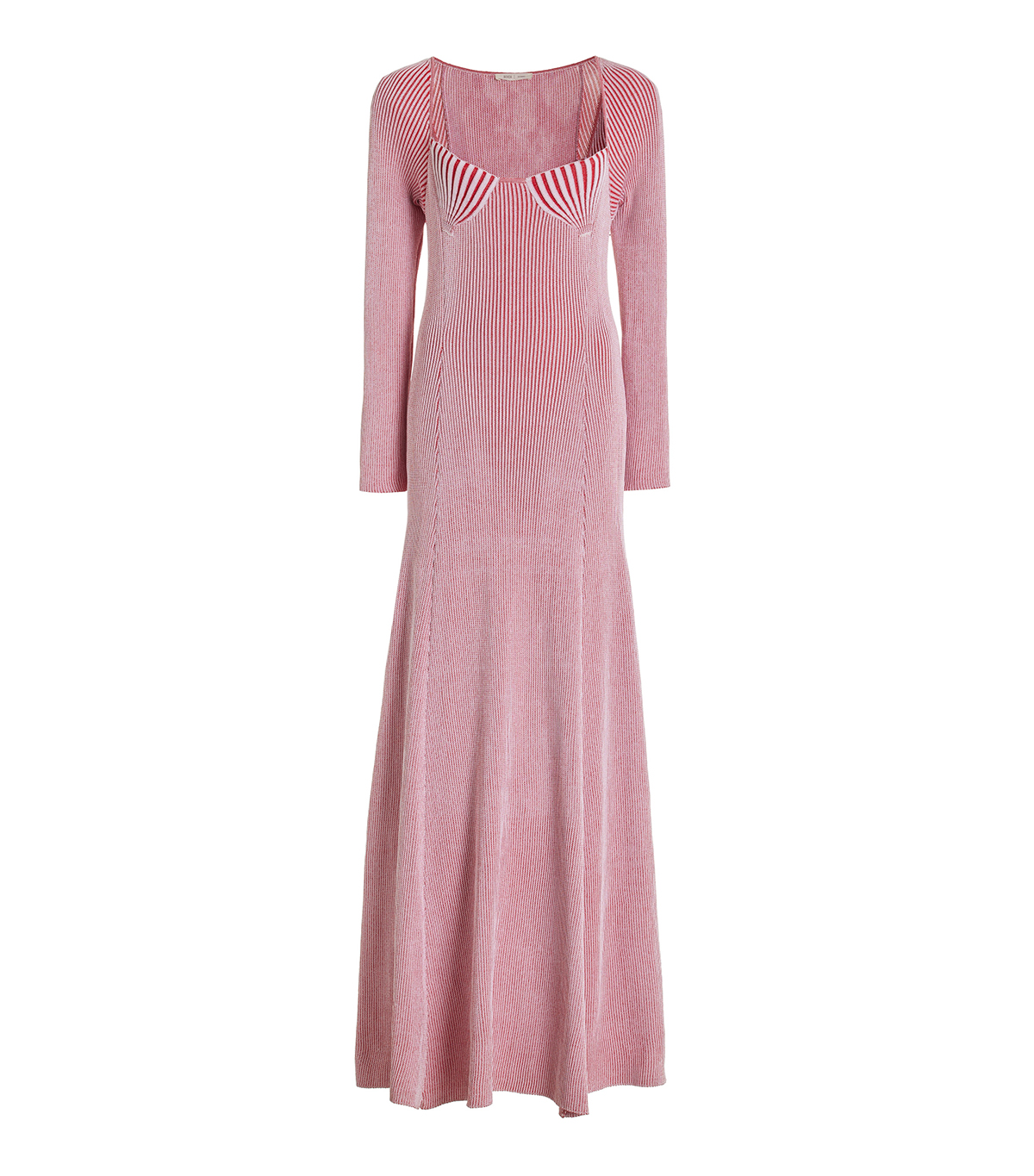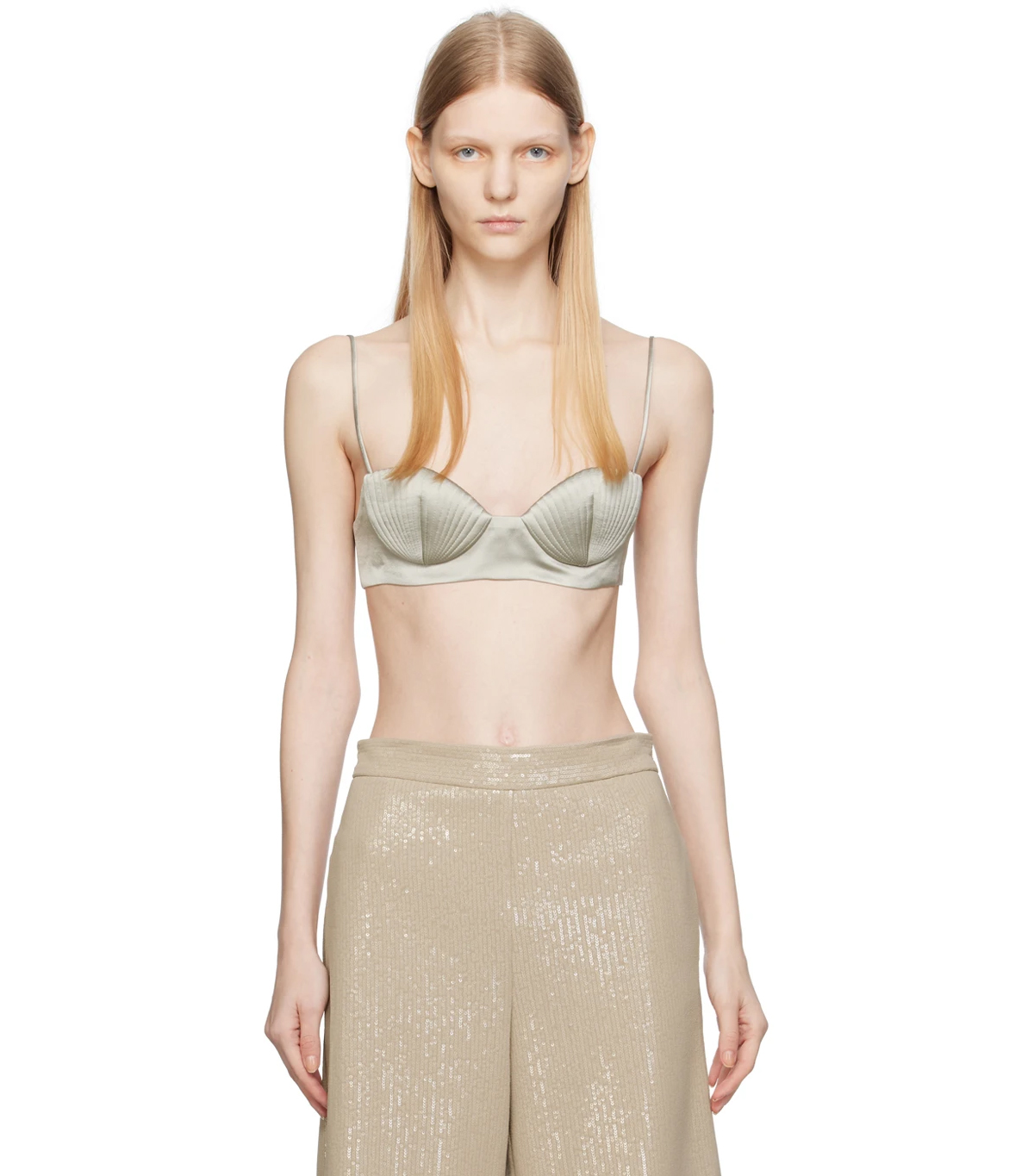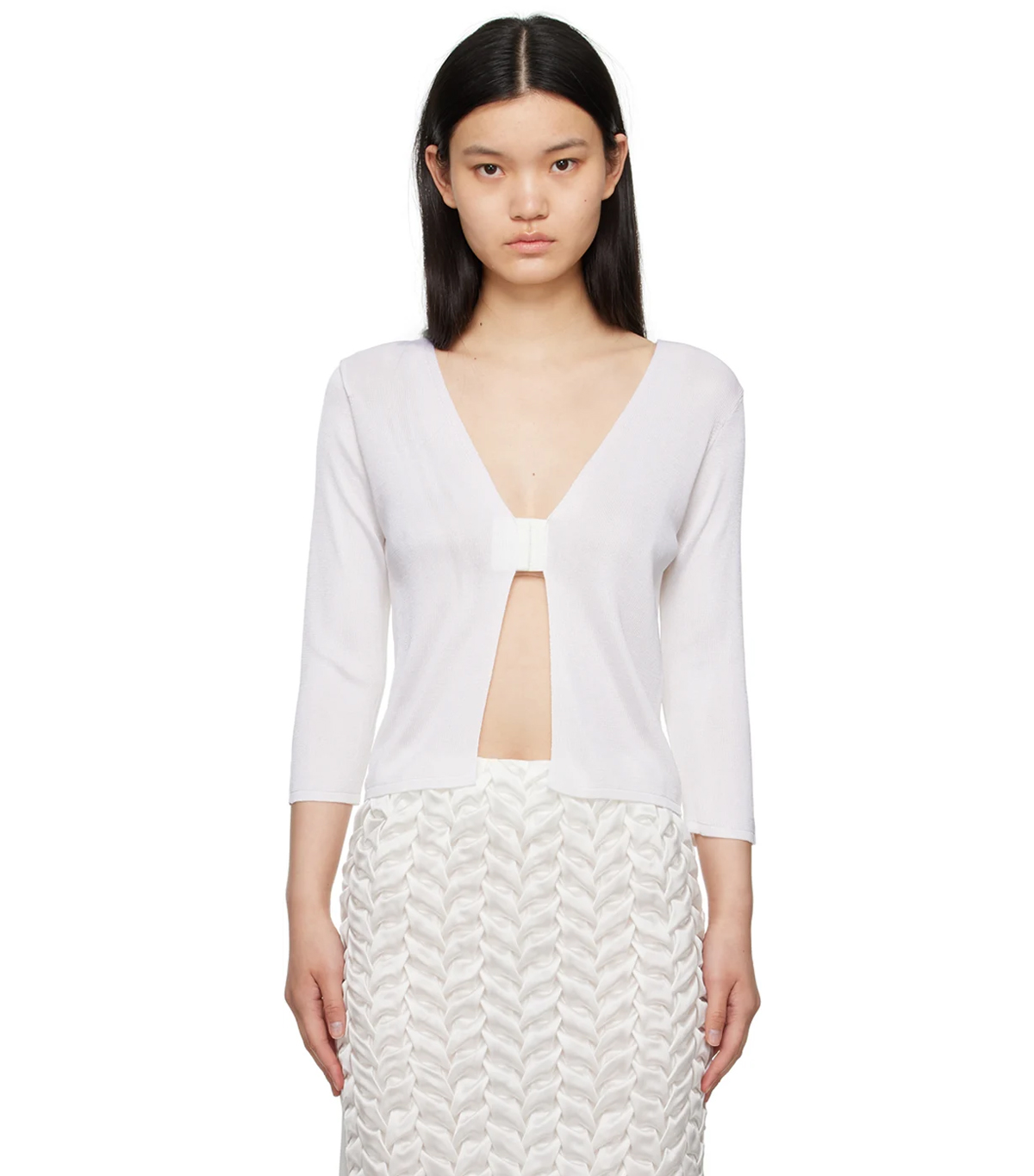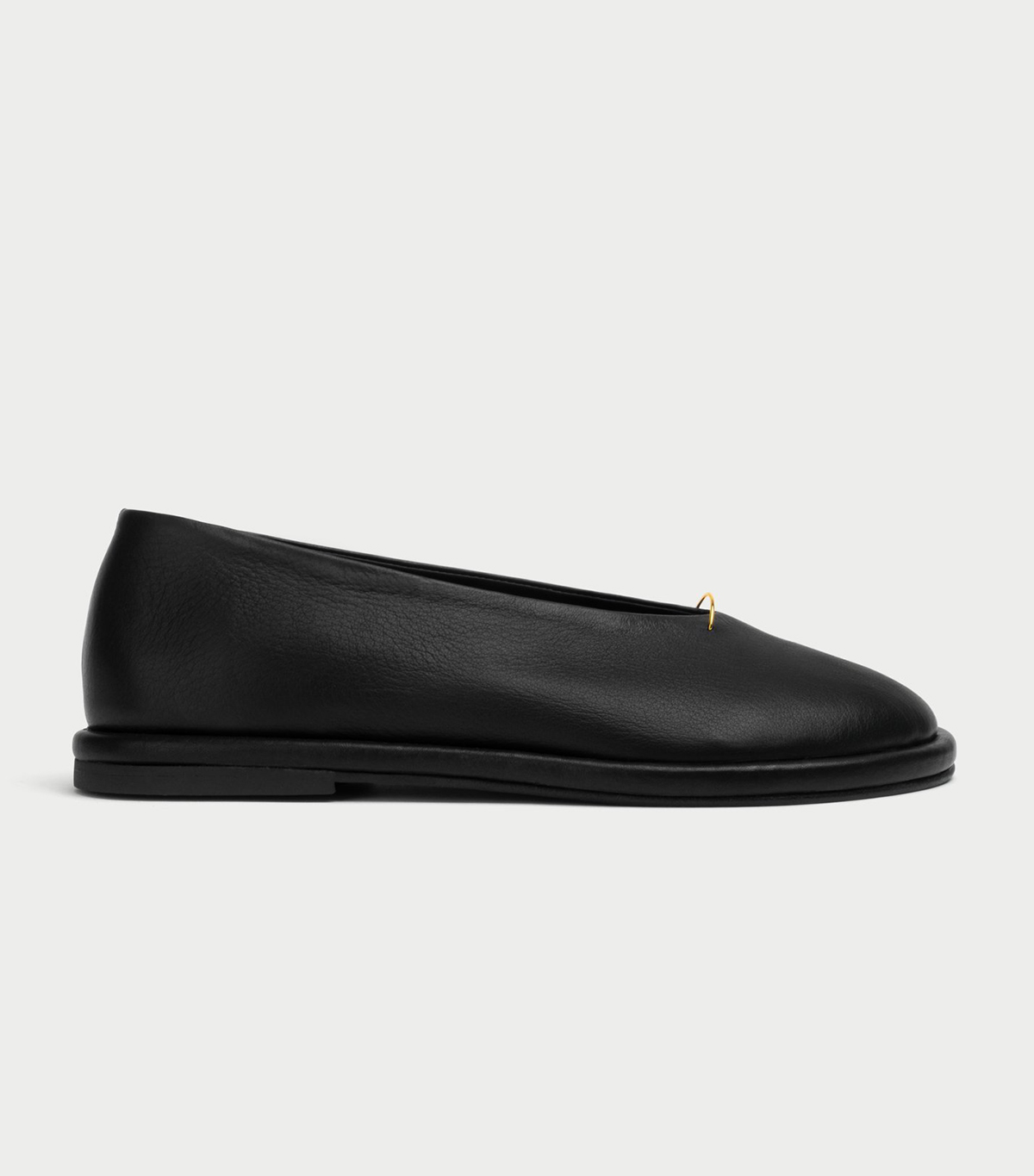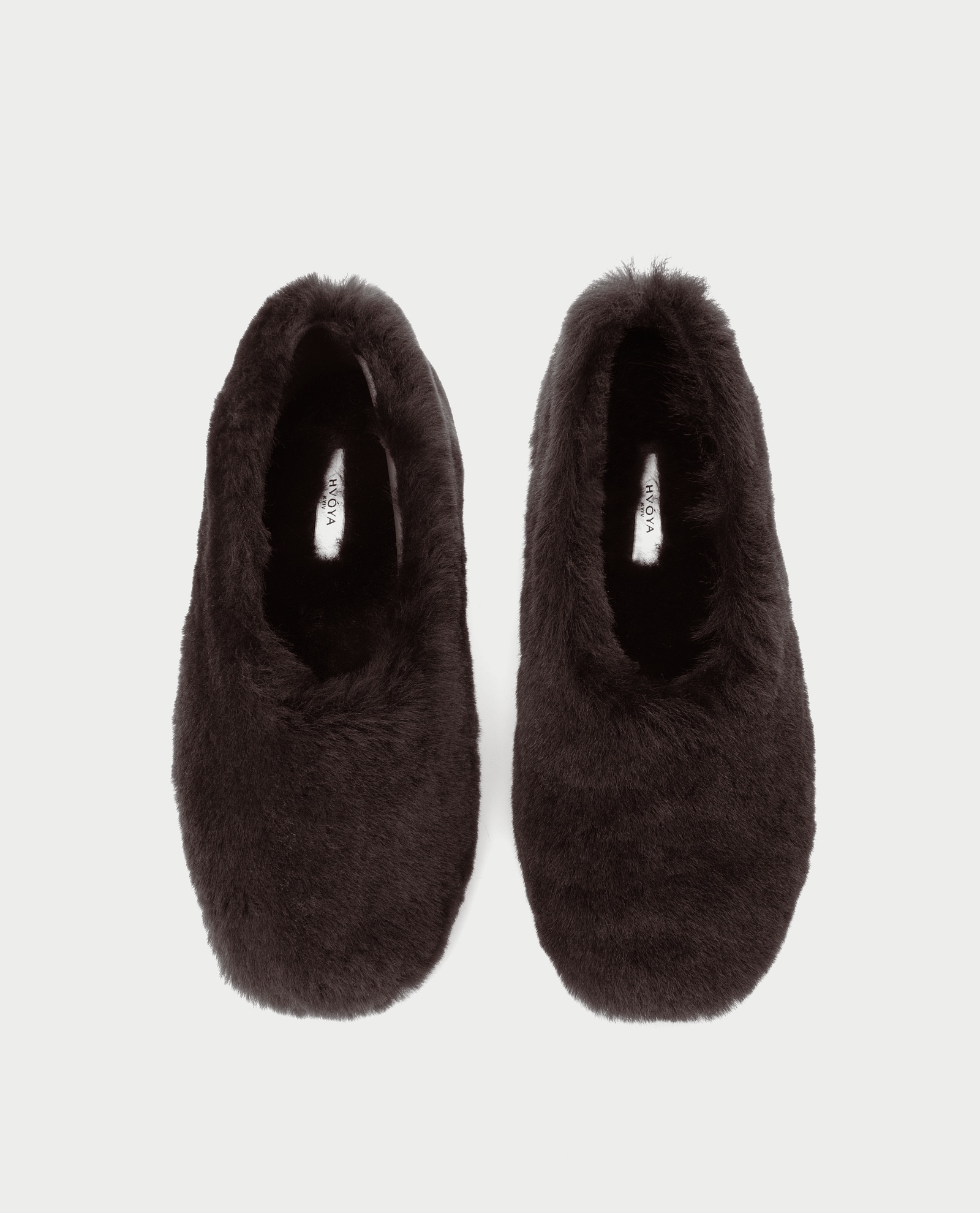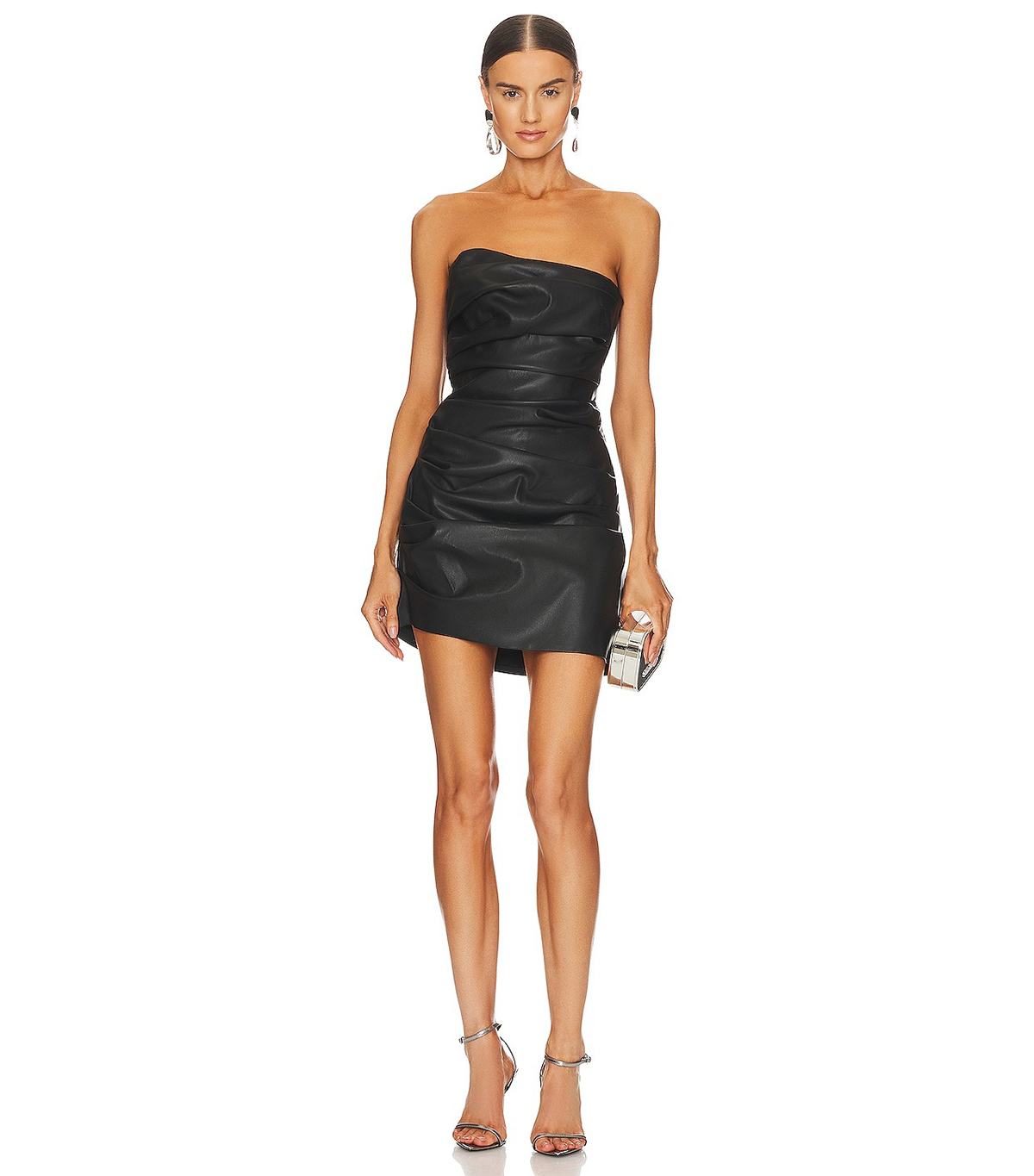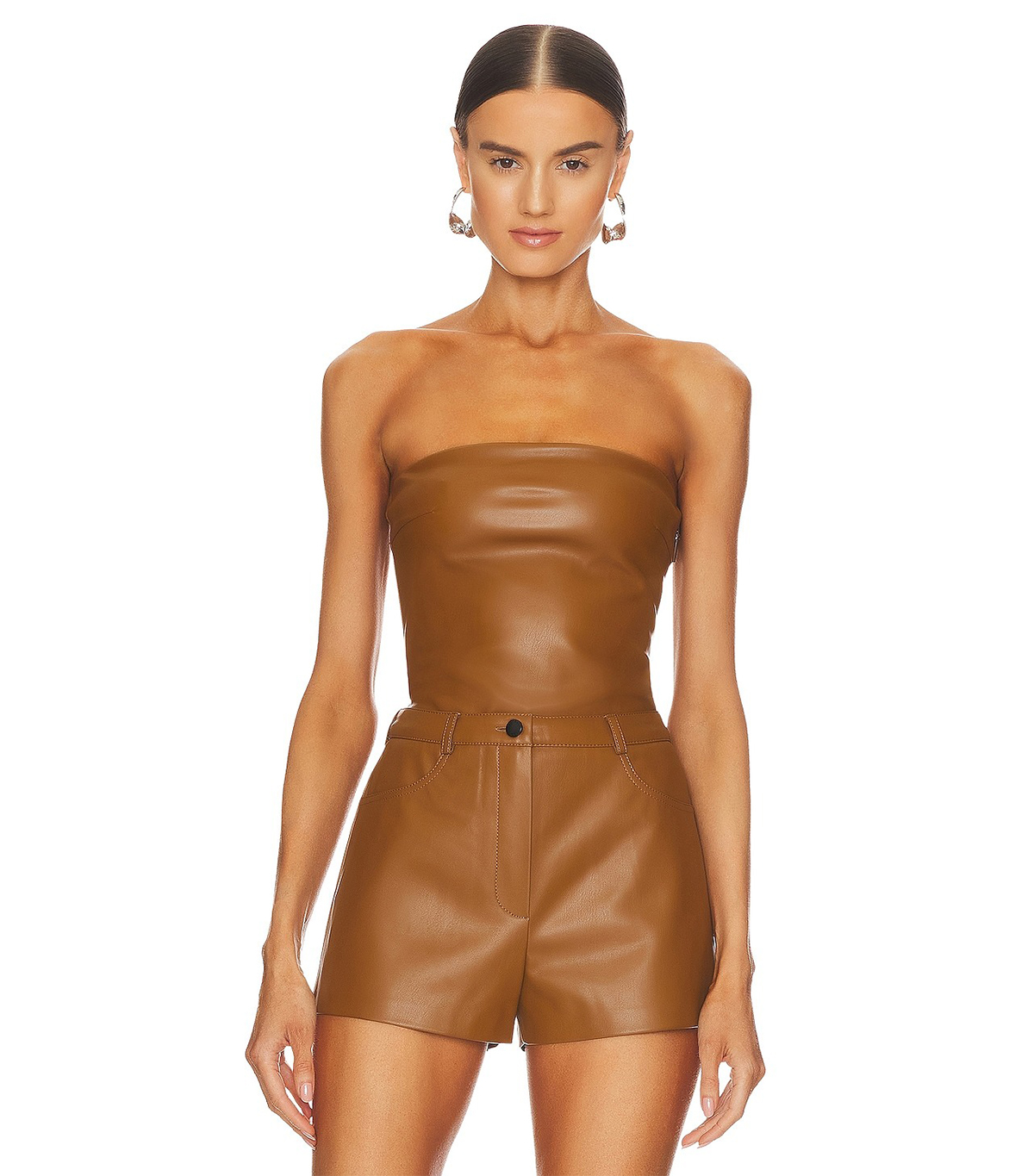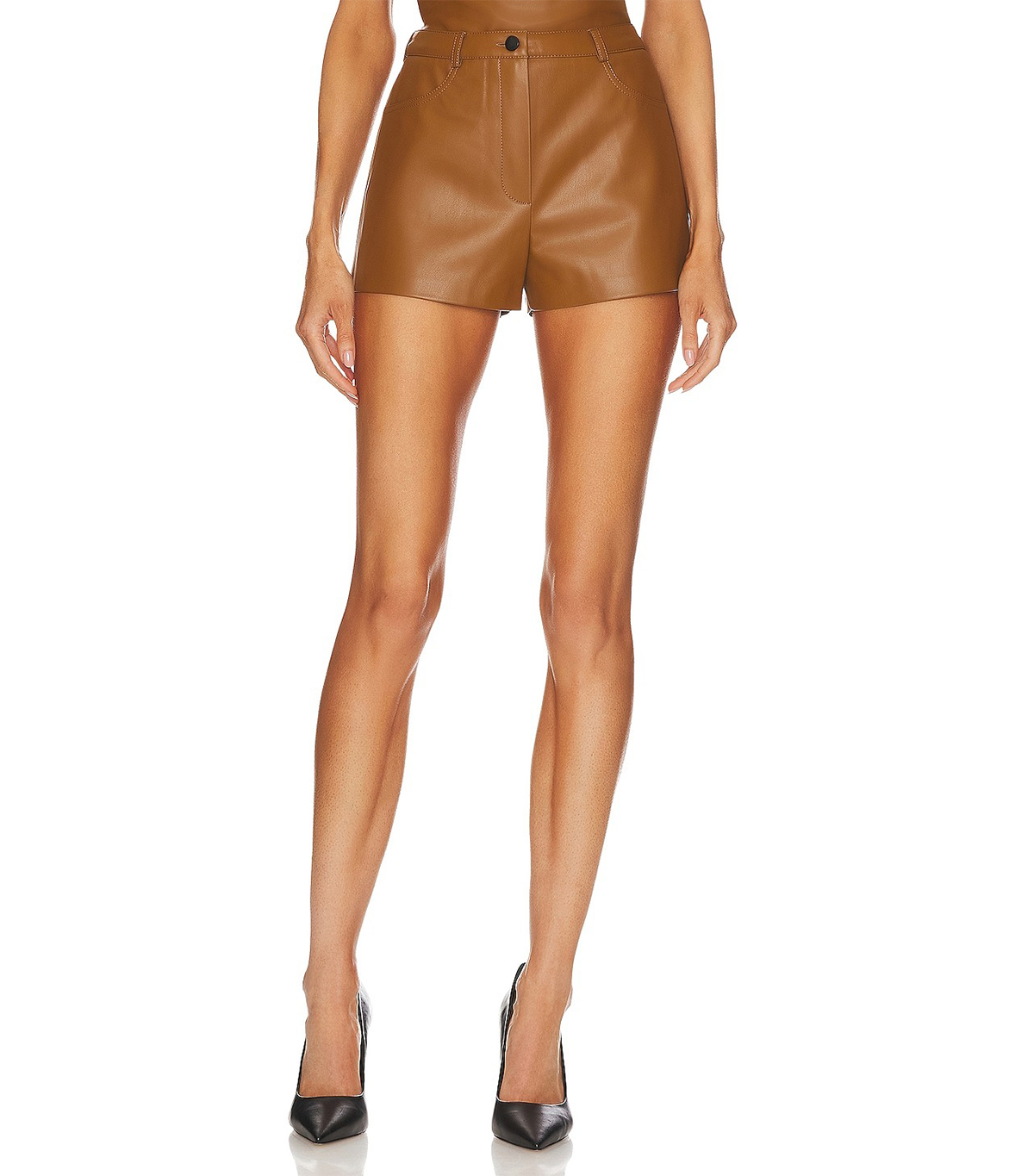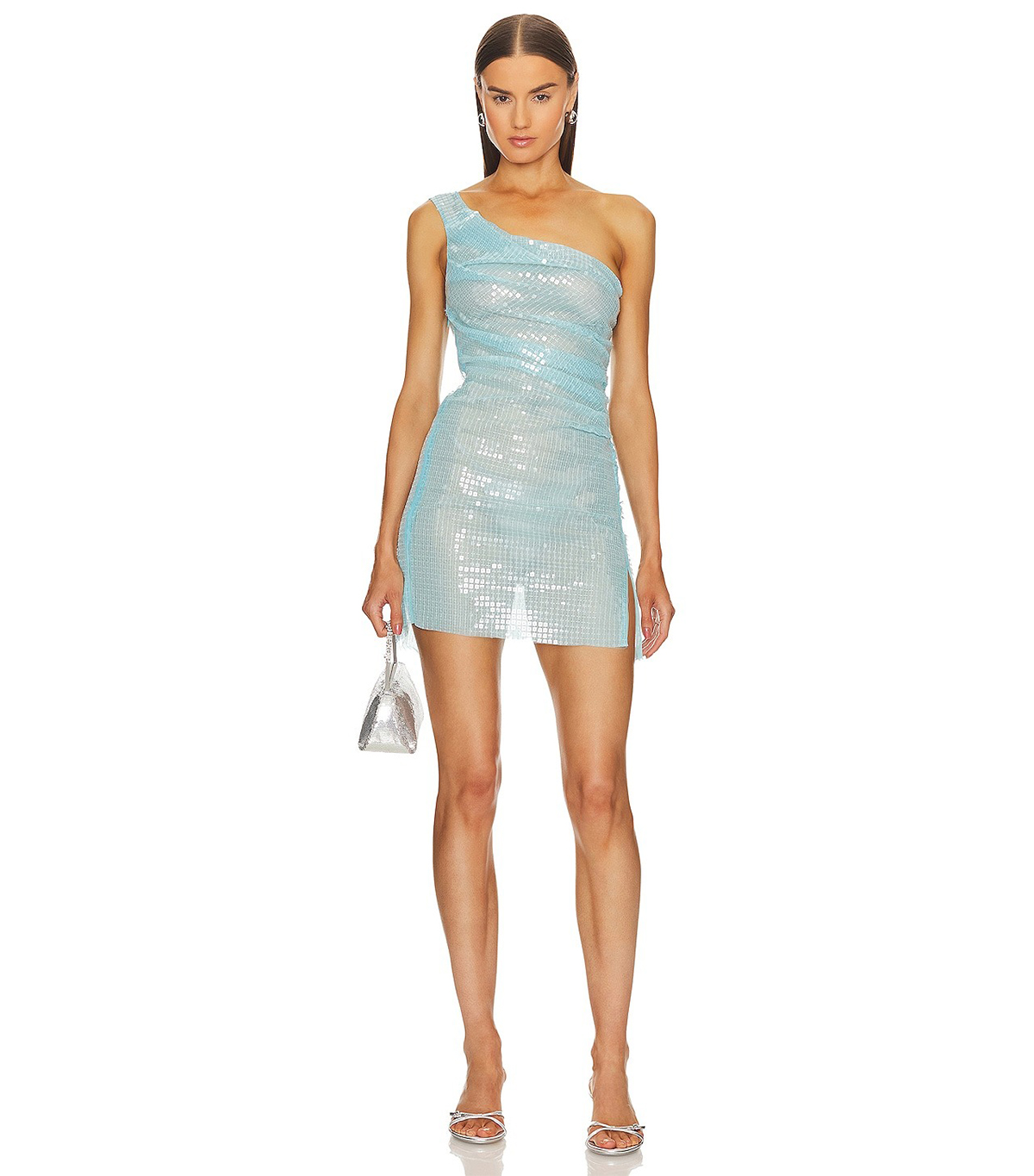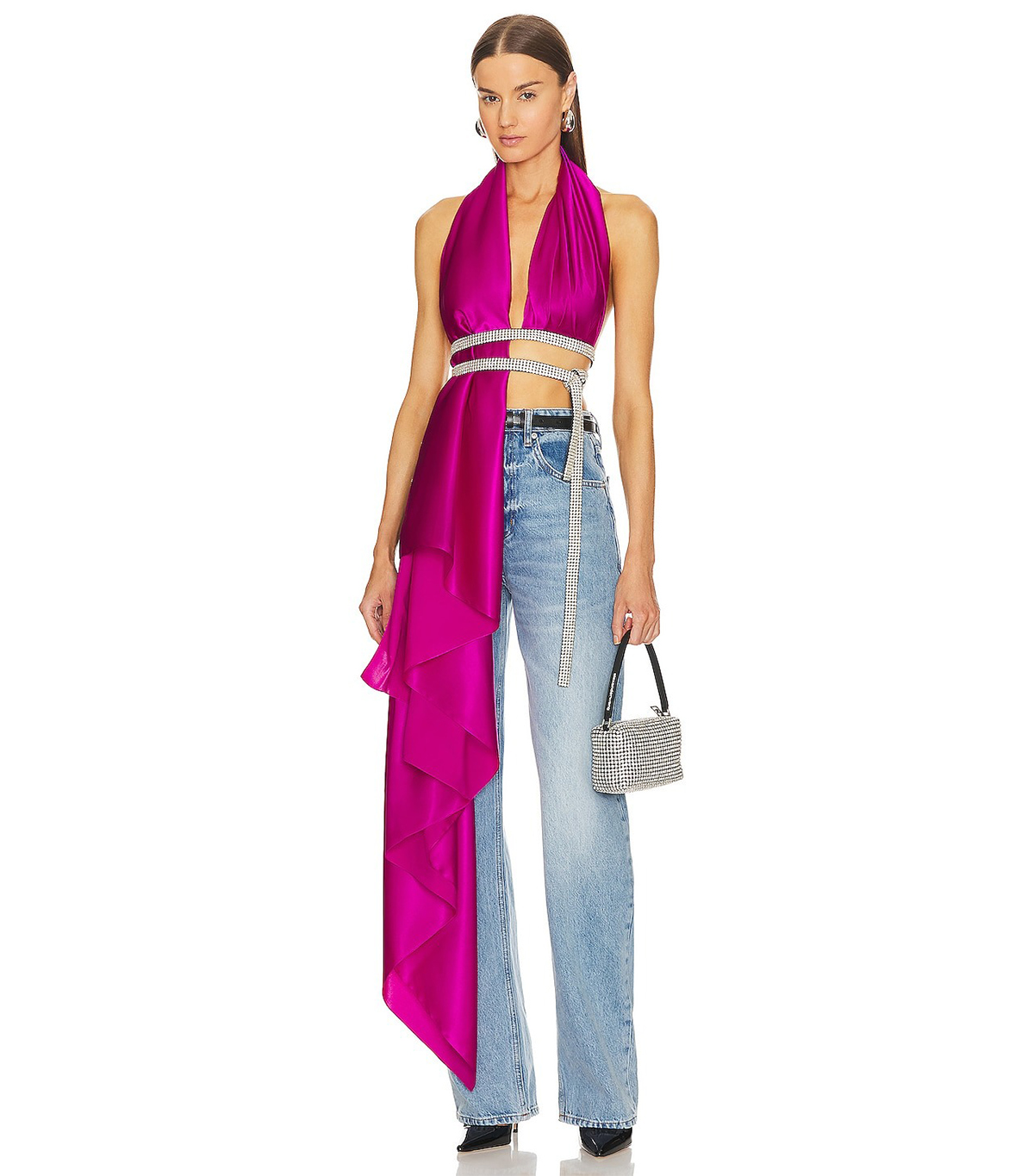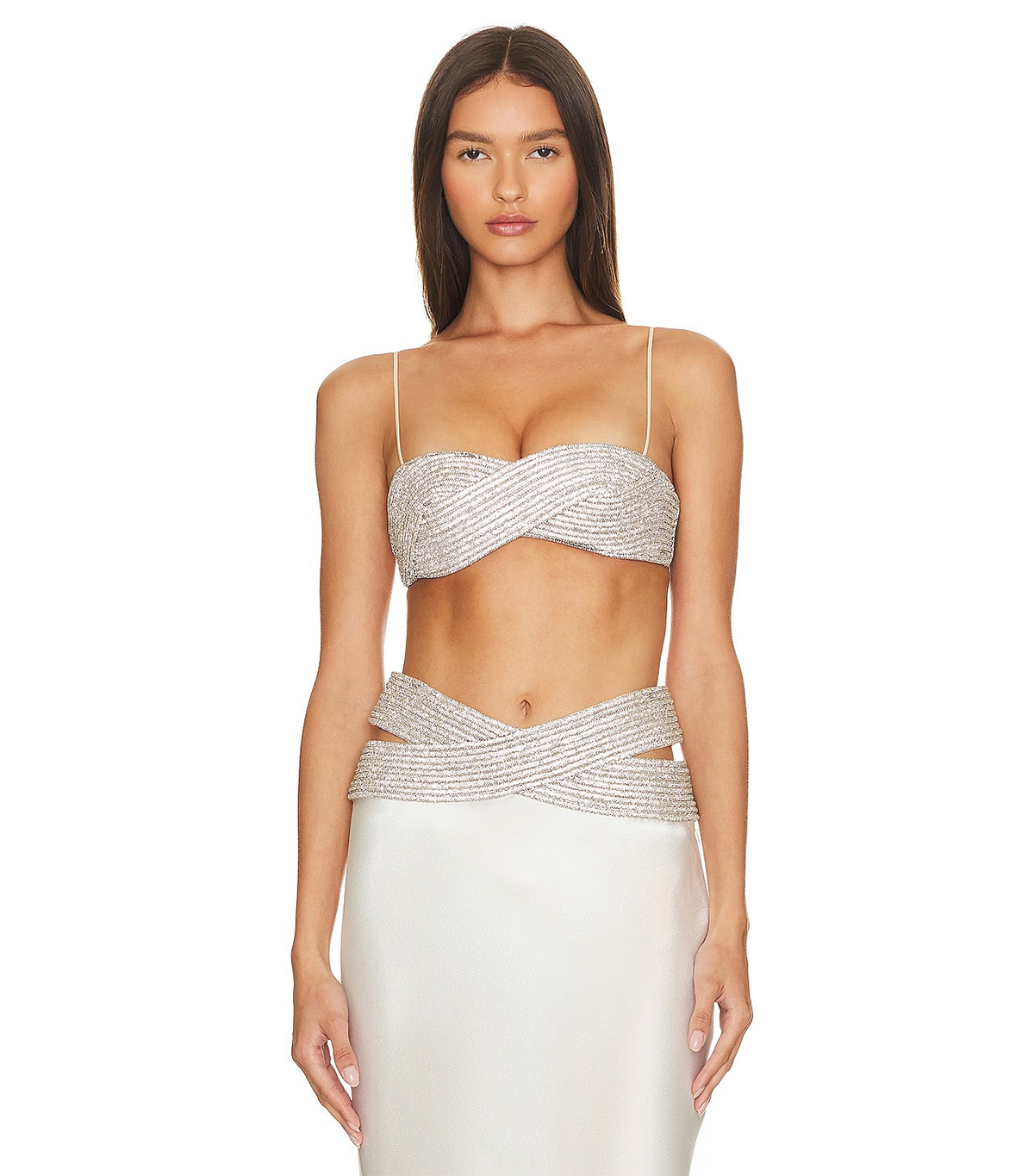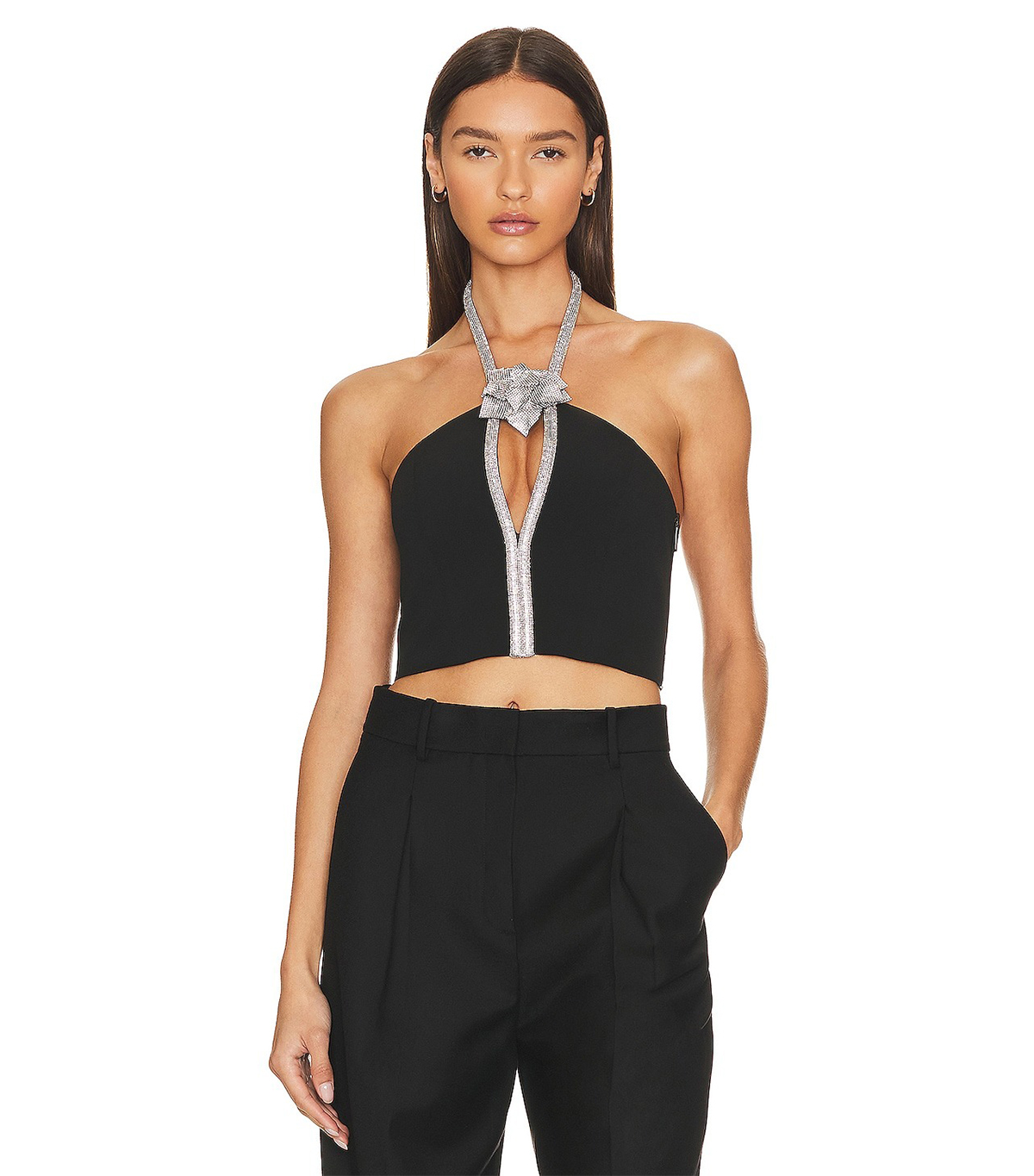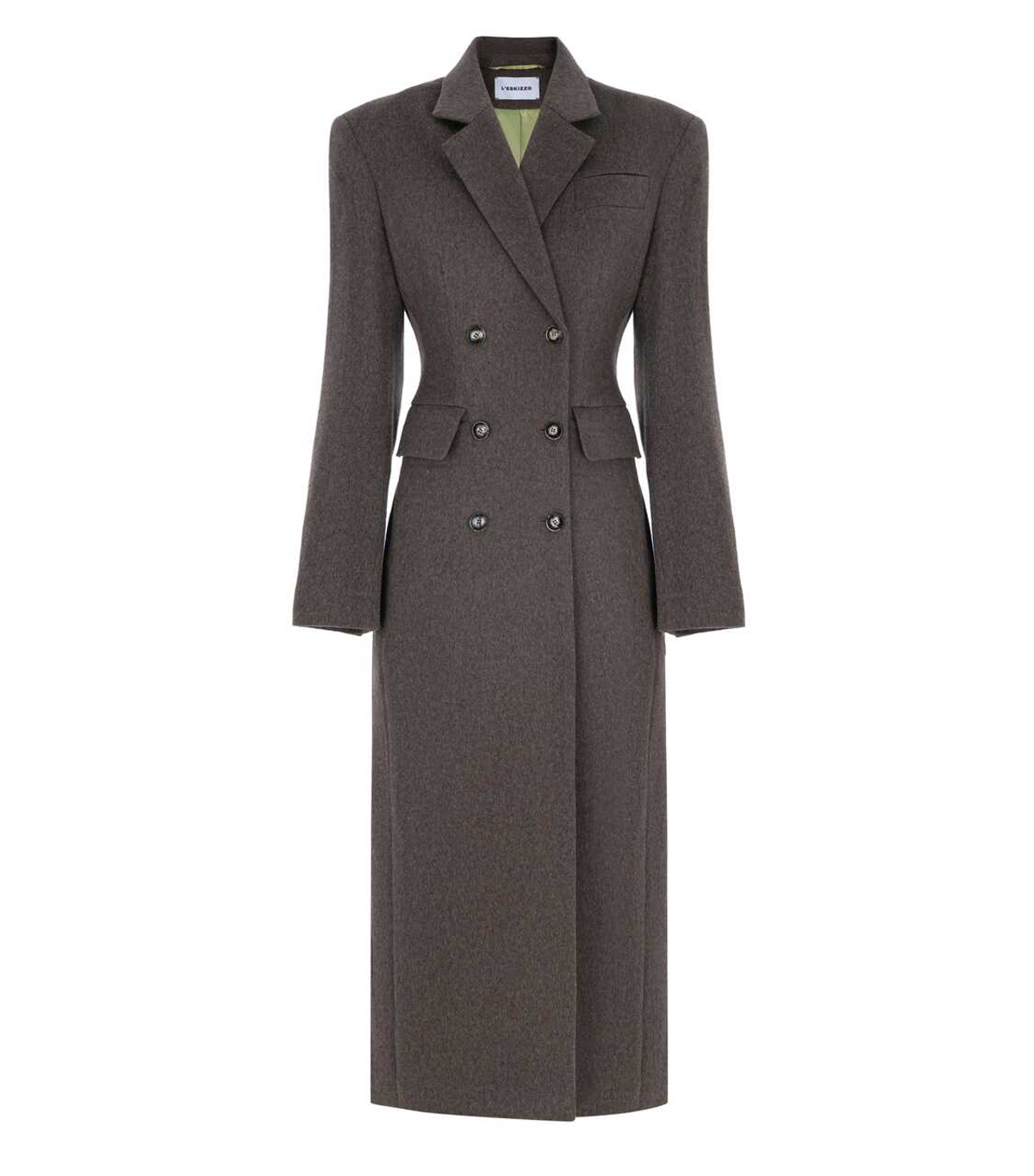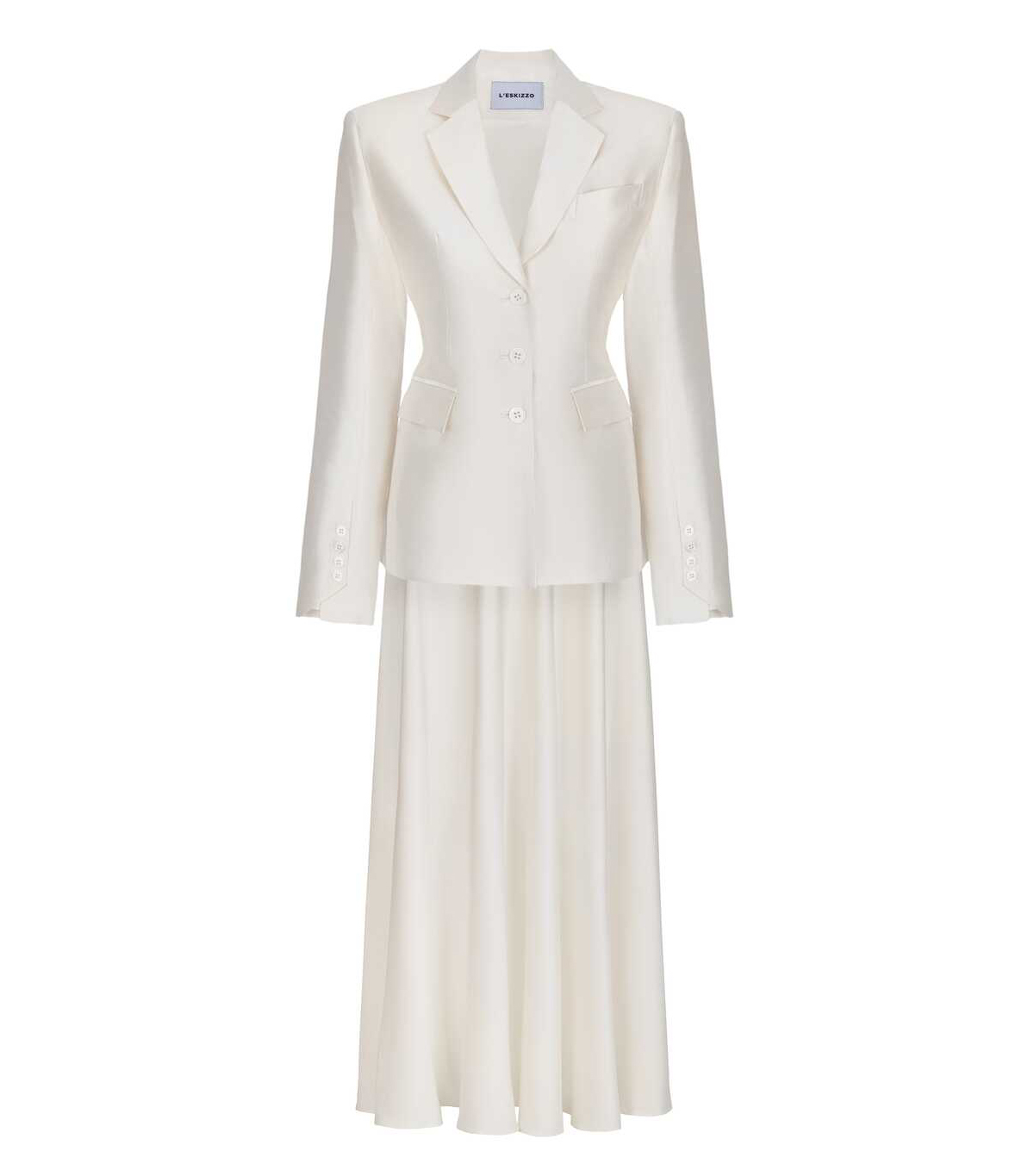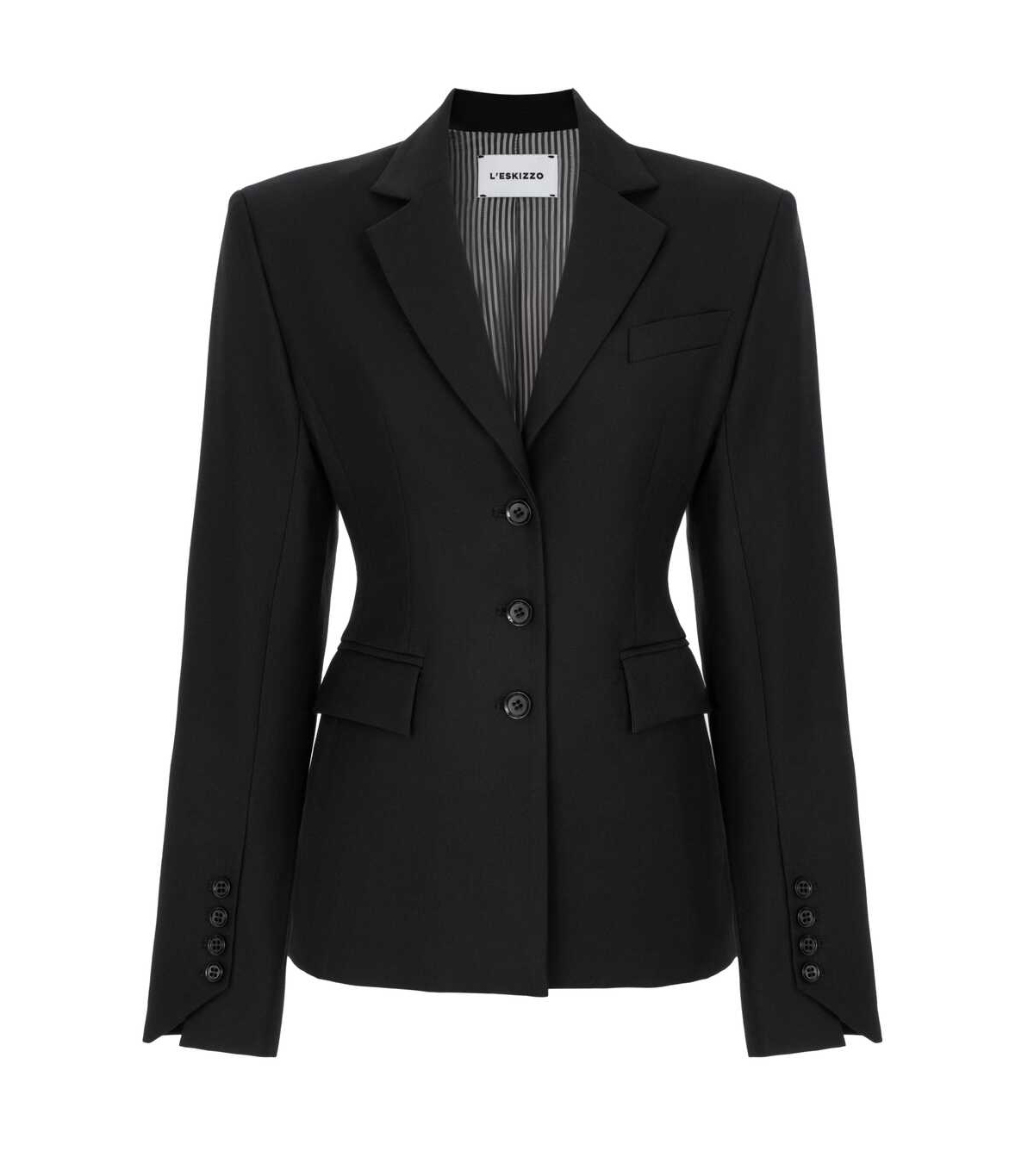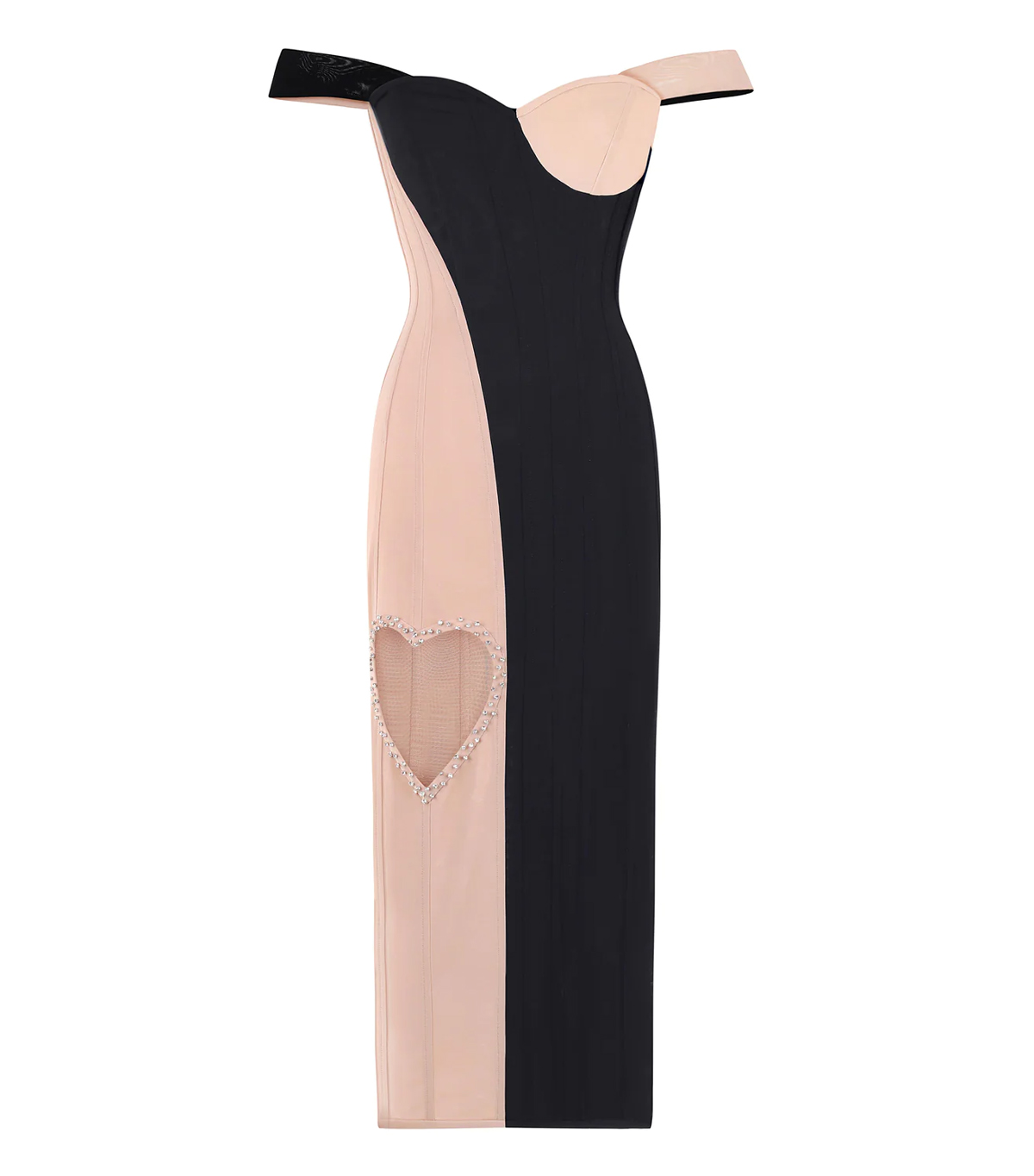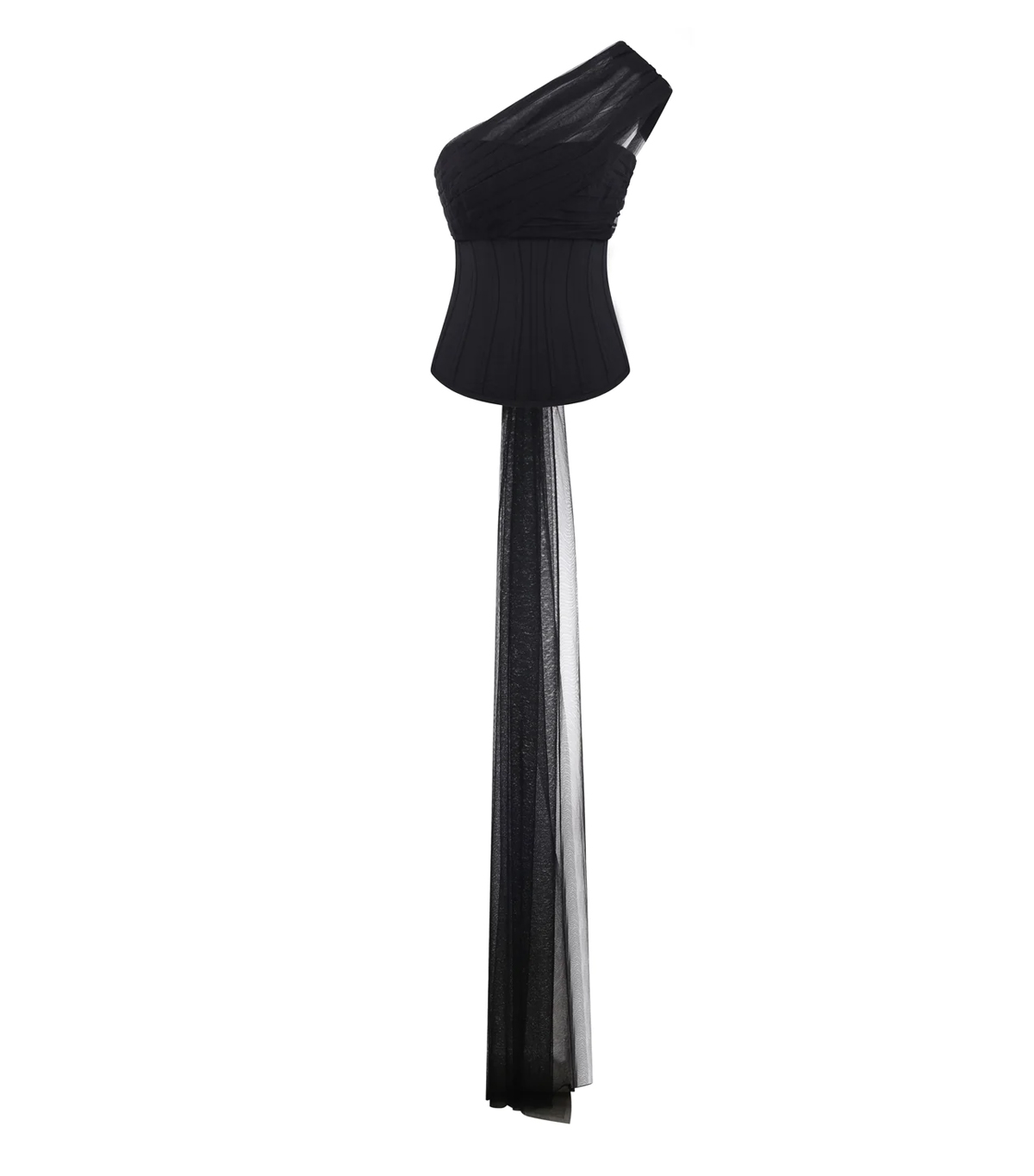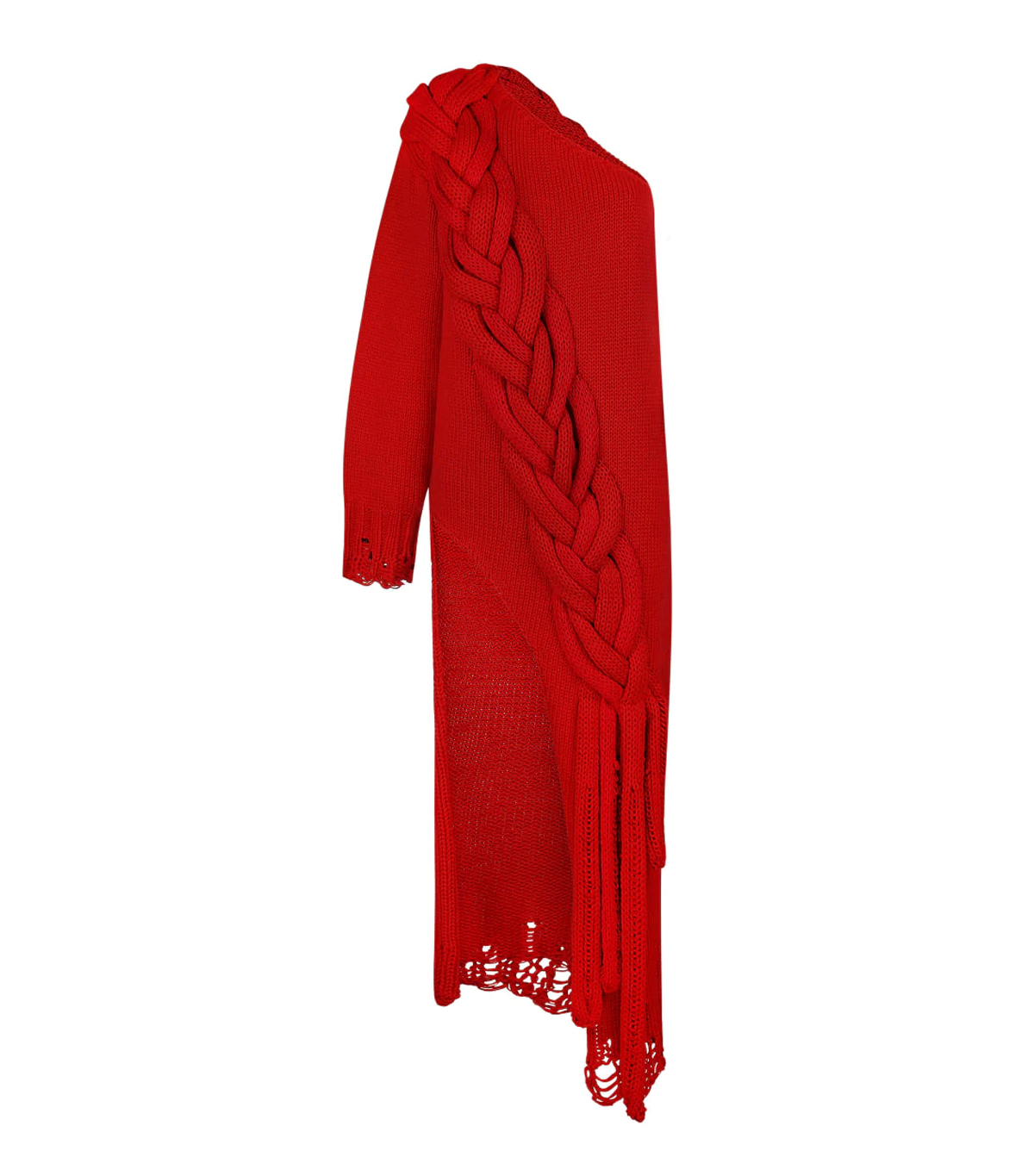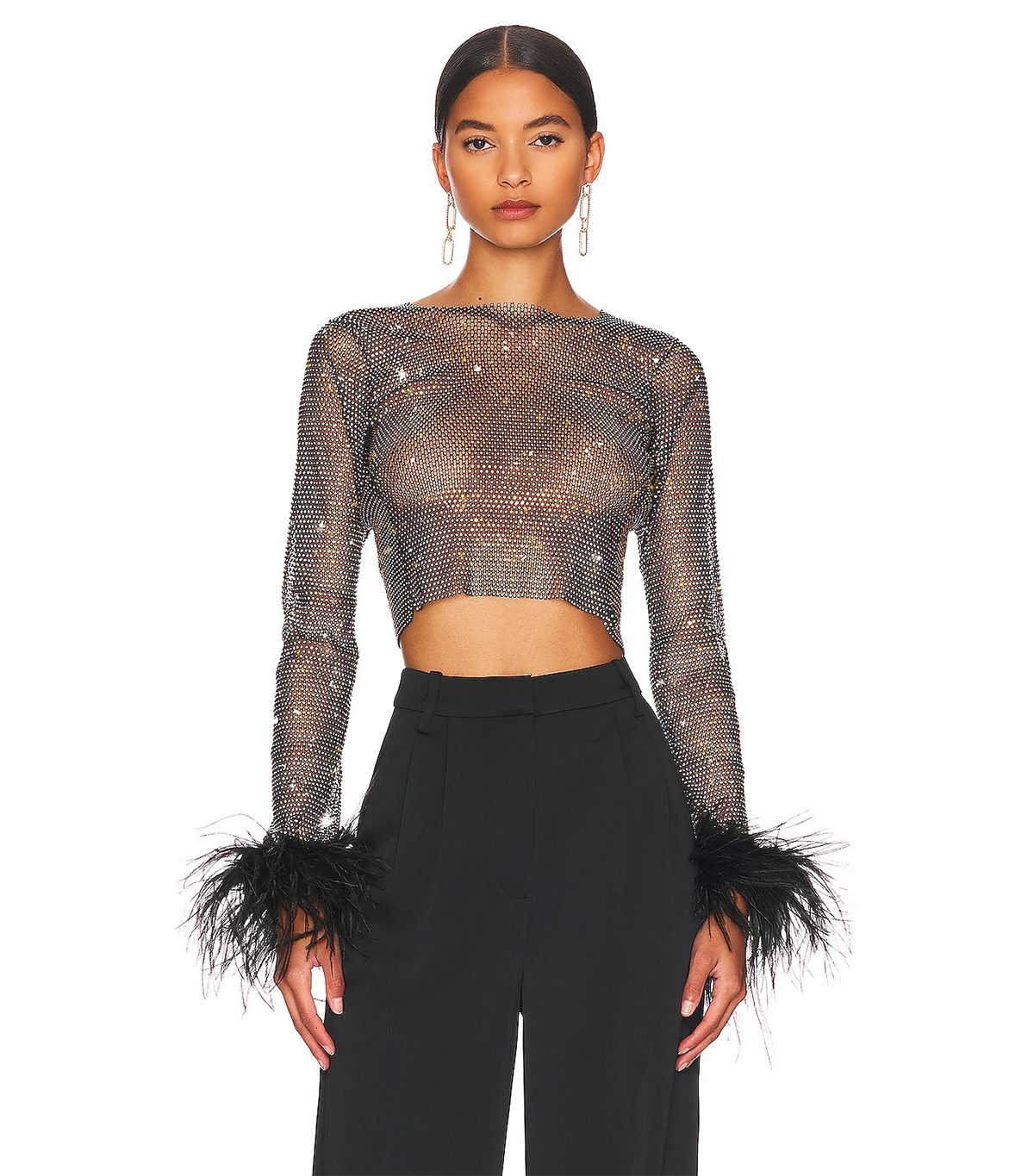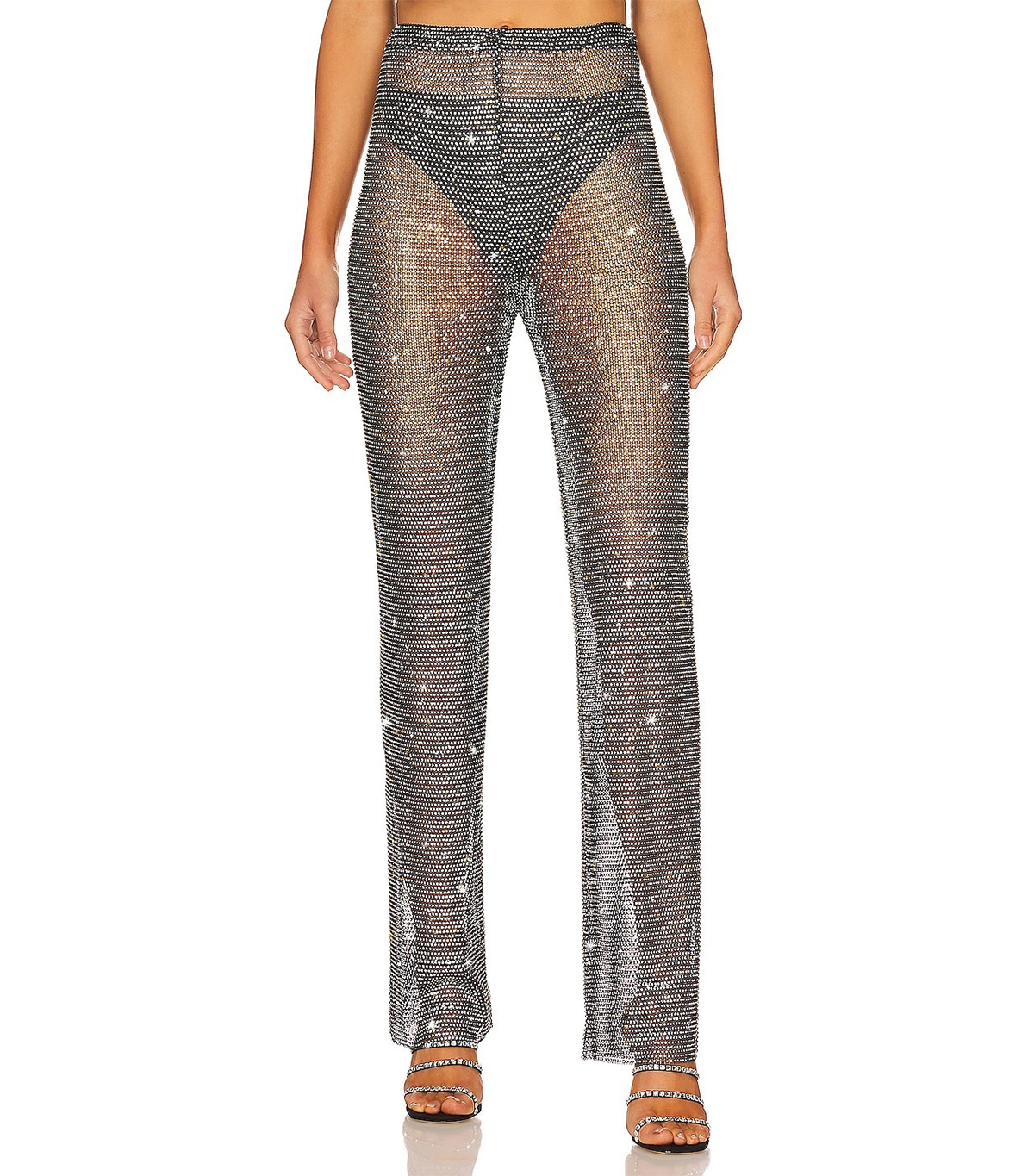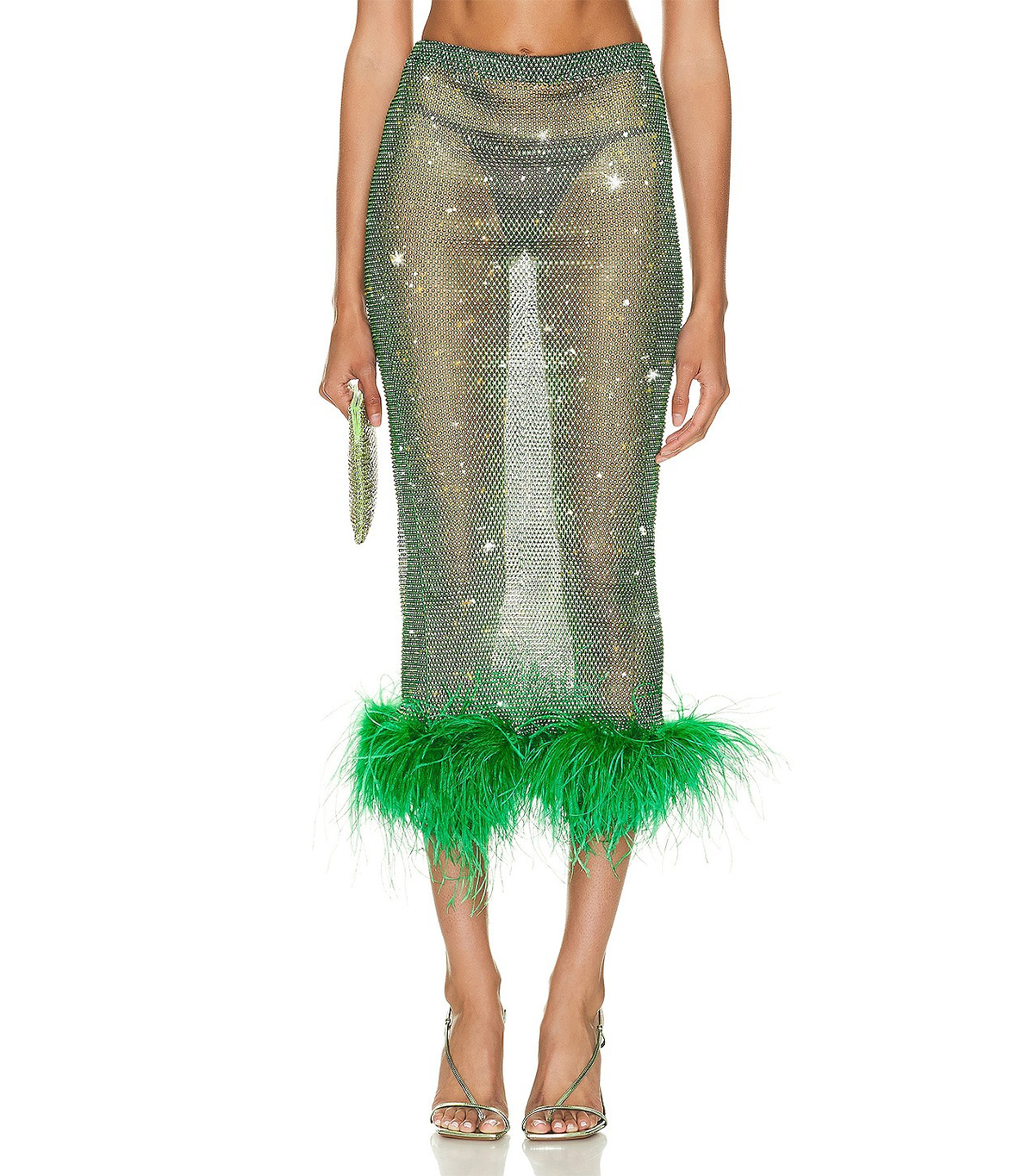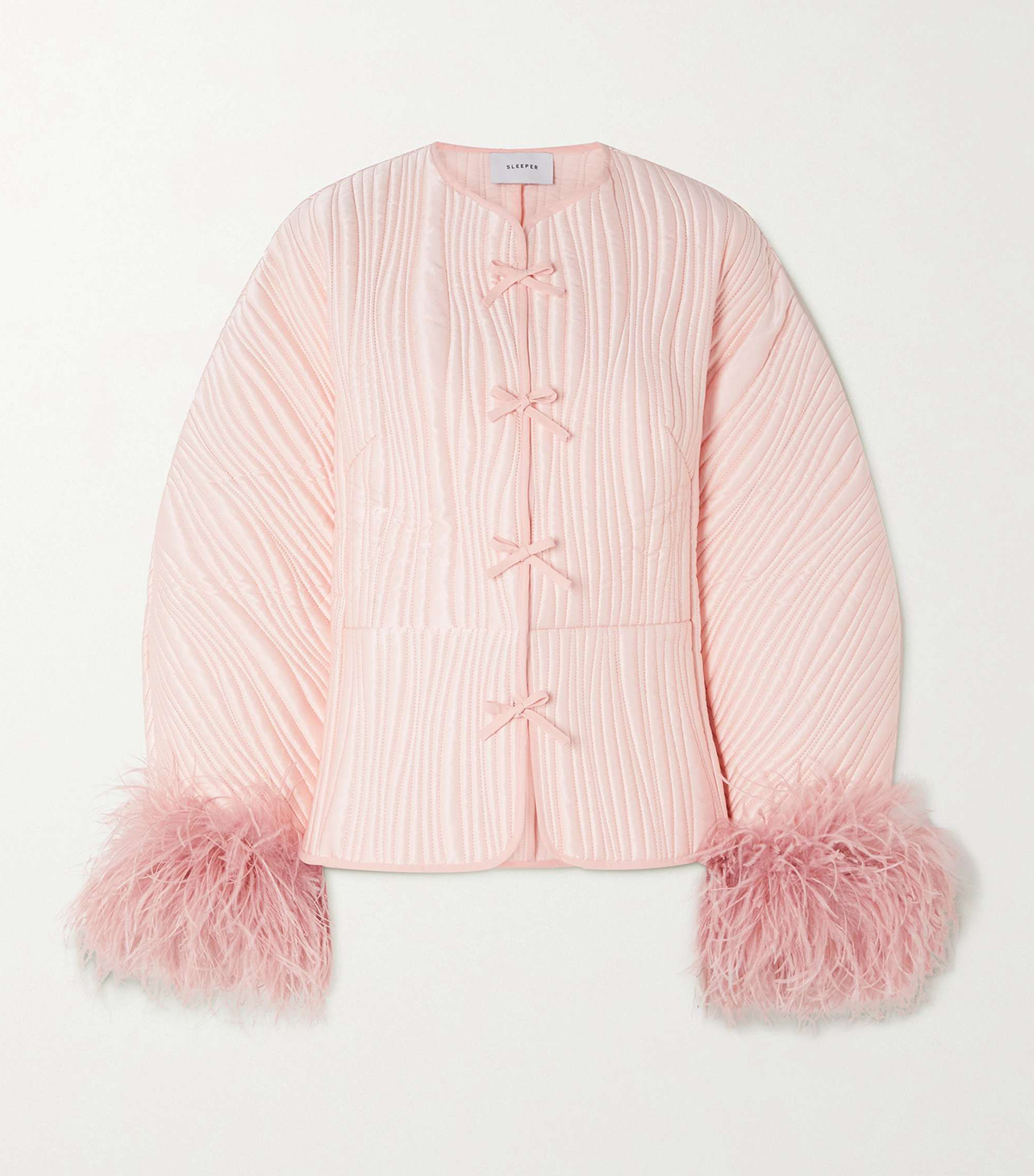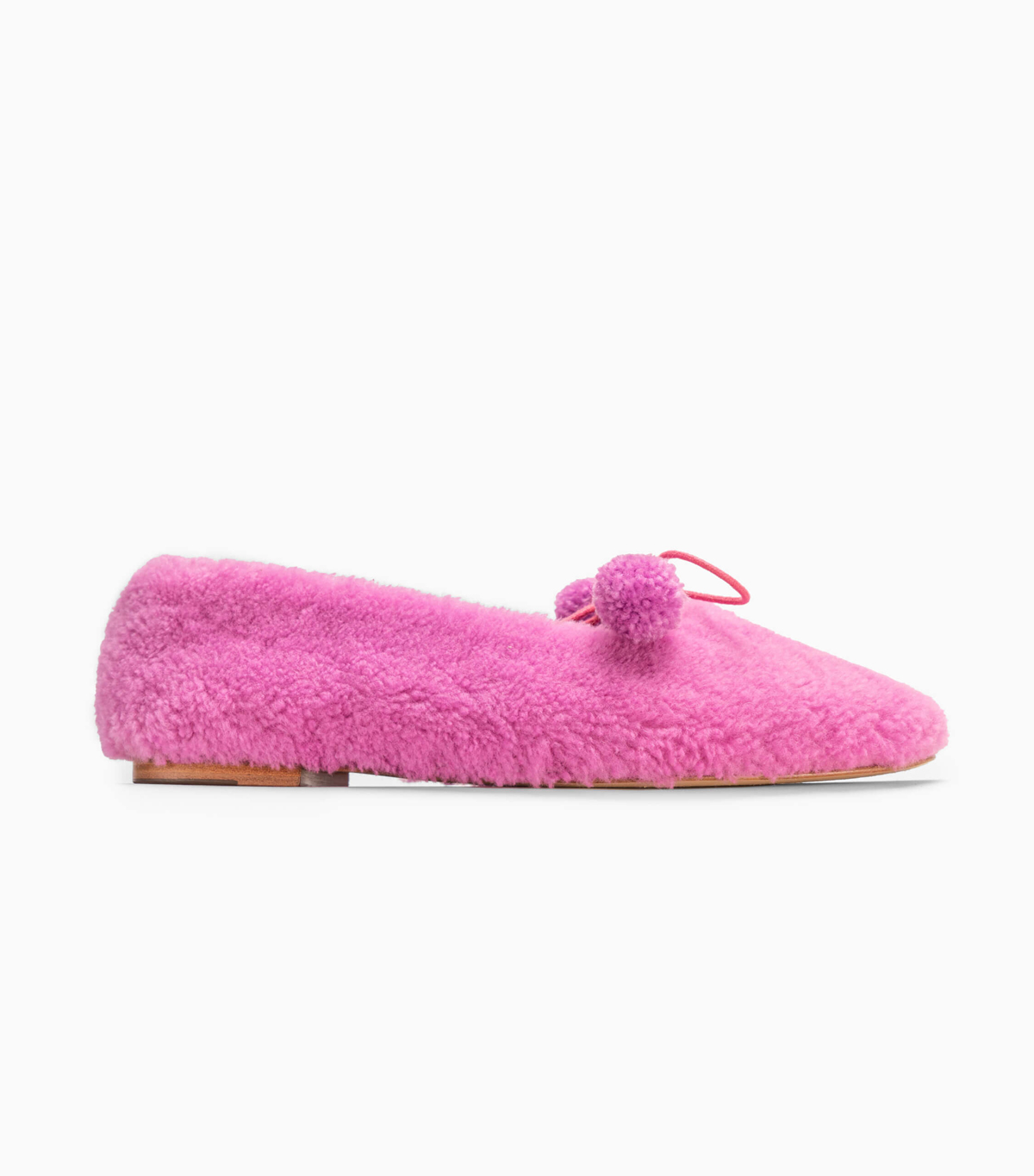"Nothing Can Stop Us From Creating": 11 Ukrainians Still Designing Despite War
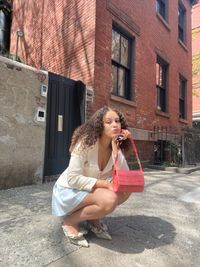

It doesn't take much these days to conclude that so many tragedies are happening in the world. One only needs to open a newspaper or their social media app of choice to witness those factual brutalities. But for some, that reality isn't something you can flip or scroll past, as it lands so much closer to home. For those with Ukrainian roots, the headlines that have surrounded the country's ongoing war with Russia are a reality that's influenced every aspect of their lives for years.
It wasn't so long ago that Russia first annexed the Crimean peninsula back in 2014 as an aggressive territorial grab. But for the first time in nearly eighty years, we've seen the first-ever land war in Europe begin again. When Russia made its first air-raid invasion into Kyiv in February of 2022, that moment forever changed the lives of millions in a way that no single headline could ever fully humanize or honor. However, as the Ukrainians have mounted their counter-offensive, we've been thinking about how imperative it is to continue to shine a light on what Ukrainian creatives are facing.
It's more pivotal than ever to not only honor the plight, trauma, and inhumanities many Ukrainian citizens face now but to also show their resounding strength in the face of such challenges. While fashion can feel trite compared to all the other tragedies happening in the world, it can also be its own form of fortitude in the face of such darkness. Or at least, that's how many Ukranian creatives living through the daily horrors of the war and continuing to run businesses see it. For so many emerging Ukrainian fashion brands, it's not just important to keep creating clothing in the face of the war for pragmatic reasons—for them, it's vital.
In light of the continued conflict, we reached out to 11 Ukrainian fashion designers to have them share what it's been like to continue creating amid the war. We discussed their challenges, hopes, fears, and vision for their brands and what the international fashion community can do to support them right now. Their work is a reminder that art can act as a beacon of hope in the face of great uncertainty.

About the brand: Founded in 2010, the Ukraine-based namesake label has gained international acclaim for its womenswear collections that play with romance through tailoring. Ahead, we spoke with the brand's founder and designer, Anna October, about the brand and how the war has impacted it.
For those who are unfamiliar with your work, how long have you been in the fashion industry, and how has your namesake label evolved over the years?
I was born and raised in the industrial city of Zaporizhzhia, Ukraine, which, for that time, had little to offer regarding design and aesthetics. At 17, I moved to Odesa, where I got an education in fine arts at the Grekov Odesa Art School, one of the oldest and most renowned art schools in Ukraine. I launched my first capsule collection in 2010, and it quickly gained the attention of the fashion community. Since then, I've achieved incredible results, including being shortlisted for fashion's most prestigious prize for young designers, the LVMH Prize, in 2014 along with becoming part of Mercedes-Benz's Generation Now, Generation Next, a project aimed at highlighting international talents in the sphere of fashion design. Those opportunities have allowed the brand to increase its presence in retail spaces such as Moda Operandi, Galeries Lafayette, Ssense, Fwrd, etc. All of this culminated in the chance to present our collection at Paris Fashion Week for the first time in 2022.
How would you describe the aesthetic world of your brand? Who is the Anna October girl?
Our collections express a spirit of sensitivity and freedom. I design to inspire women to perceive themselves happily and courageously. I hope the brand contributes to the female empowerment movement by allowing women to be pleased by their appearance. We have to get back to becoming friends with our bodies. I want women to enjoy themselves and appreciate their bodies, which allows them to feel the world around them. My pieces are just one of the tools that help to make this happen.
One thing that makes your work so special is your attentiveness to the female form through your clothing. For you, what power does tailoring hold in highlighting the beauty of our bodies? What role do you hope your clothing plays in how consumers perceive themselves?
Cut and fit is what design is about. For me, it's the core of my work and what I pay attention to the most. I strive to develop shapes and designs that follow a woman's body. It should not be a cover but a veil enveloping her body and following her movements. This is the most natural and harmonious approach to a woman's clothes. Of course, I love the bias cut. I love fabrics that are quite dense but flowing enough and emphasize the beauty of the female body. I'm always looking for details that look interesting on the skin. I love the female body and sing an ode to it in every collection.

Obviously, Ukrainians are grappling with the continued war against aggression by the Russians. How, if at all, has the war impacted your business? What challenges have you faced in your day-to-day operations that people might not be aware of?
At the beginning of the war, I was forced to seek shelter and went to Paris. I had to leave all Anna October pieces in our studio in Kyiv, but over time, my team managed to transport them to Estonia. As a result, the work system has changed completely. Now, we work between three countries—we produce everything in Ukraine, send orders from Estonia, and I work in France. The war accumulated all the strength my team and I had. We had no interruptions or delays and resumed our work just a week after the full-scale invasion started. The supply chain is the biggest issue because everything takes twice as long now. You need at least two weeks to deliver something to or from Ukraine because there's no air traffic. But we are coping with it and still aim to grow the business even in this environment. We need to work in the context of the fashion calendar, and any of our difficult circumstances can't affect the fact that we must continue to produce everything on time, so we do it.
Fashion can feel so trite compared to all the other tragedies happening in the world, but for you, why do you feel it's been imperative to keep creating clothing in the face of the war? What, if any, has the creative process given you during this time?
As Vita Sackville-West said, "Small pleasures must correct great tragedies, therefore of gardens in the midst of war, I bold tell." My goal is to be useful and create something to improve their lives. I've been doing this throughout my collections, which is how I carry out my mission. Broadcasting my aesthetic vision seems like a meditation. If I have the chance to create, if I have the strength to do it under any circumstances, if I'm supported by my team, friends, and people worldwide, then I have to do it. Creating is how I feel useful. Altogether, I love making clothes. This is my most natural state. Being creative in the face of war gives me strength and hope.
How can the international fashion community continue to support Ukrainian creatives through this time?
I wish the fashion community would pay more attention to the war in Ukraine and people who were forced to leave their homes and provide more collaborative support, as they would if this happened to their neighbor. The war cannot just stop unless we win it. We are not waiting. We are fighting and need continuous government and industry support. The horror of war my country and people are facing is beyond scary, and I don't want other countries and people to go through it. I know humanity has the power to stop this war. People have the power to demand it. So please do it in any possible way.

About the brand: Kyiv-based designer Elena Reva founded her namesake label in 2012 with the goal of creating a capsule of luxury essentials, including silk dresses and sculptural corsets that have become brand signatures. Here, read our conversation about the brand and how Reva is navigating her business through the war.
When did you launch your label, and what compelled you to start it? How has the business evolved over the years?
My journey into the fashion world began at 15 when I ventured into modeling. The experience connected me with designers during fittings and shows and allowed me to grasp the art of sewing clothes. It was a crucial step that eventually led me to my true calling: clothing design. ElenaReva was established in 2012 when I inaugurated a flagship showroom in the heart of Kyiv, where all our collections are meticulously crafted. That year also marked the debut of my first collection at Ukrainian Fashion Week. Since then, we've expanded ElenaReva's reach further, making its presence felt at the Paris showroom and gaining recognition across the Middle East and Europe right after its inaugural season. But I'm most proud of the fact I was honored with Ukraine's Best Fashion Awards in 2017, a testament to my dedication and creativity in the industry.
You've described the brand in past interviews as "demi-couture." What do you mean by this? How does this approach differentiate you from other ready-to-wear labels?
Demi-couture forms the cornerstone of our offerings, encompassing refined occasionwear, expertly tailored suits, and timeless staples. The heart of our brand identity beats in sophisticated attire, including silk dresses and corsets, designed to elevate both special occasions and everyday moments. Distinctive to ElenaReva are our sculptural corsets and flawless bustier tops, which embody femininity and grace. Amid the celebration of women's allure and self-assuredness, meticulous craftsmanship and premium fabrics remain our unwavering focus.
You regularly collaborate with Ukrainian artists to introduce exclusive prints throughout your collections. Why is it important to you to support your local art community and give them this platform?
Art serves as a profound wellspring of inspiration for me. Through collaborative efforts with Ukrainian artists, garments acquire enriched significance, weaving a narrative that is both robust and profound.

Which part of Ukraine are you originally from? How do you feel your heritage has informed how you approach style? How does it influence your collections on the whole?
Born in Kharkiv, my style undoubtedly matured in Kyiv. My purpose revolves around upholding femininity and elegance channeled through minimalist and refined designs. Capturing a sense of individuality and feminine empowerment rooted in the diverse preferences of women irrespective of age or lifestyle serves as my guiding principle.
Obviously, Ukrainians are grappling with the continued war against aggression by the Russians. How, if at all, has the war impacted your business? What challenges have you faced in your day-to-day operations that people might not be aware of?
The most significant change is that I no longer have the opportunity to work with my team daily. I now operate predominantly online. We have overhauled our work system entirely, primarily focusing on conducting sales through digital platforms. While this new approach is different, it has brought about unique benefits. We have adapted and thrived in this new reality, embracing innovative ways of working.
Being that it is such a tumultuous time, how, if at all, are you adapting the business for the future? What are your hopes for the future, in general?
Currently, we're proactively exploring new markets, engaging in online sales, and collaborating with influencers. Sharing my creative vision and beauty ideals with the world brings me immense satisfaction and keeps me going. Simultaneously, I'm a staunch advocate of sustainable living and integrate ecological principles into our practices. We embrace 100% natural eucalyptus fabric, offering breathable, absorbent, lightweight, and soft garments. Our commitment to sustainability extends to not using real fur, and we frequently address ecological concerns within our collections. For instance, our recent collection focused on water—a symbol of renewal, movement, and life source. This perspective also sheds light on ocean pollution and the environmental risks certain lifestyles pose. We're of the mindset that fashion can shape a better future.
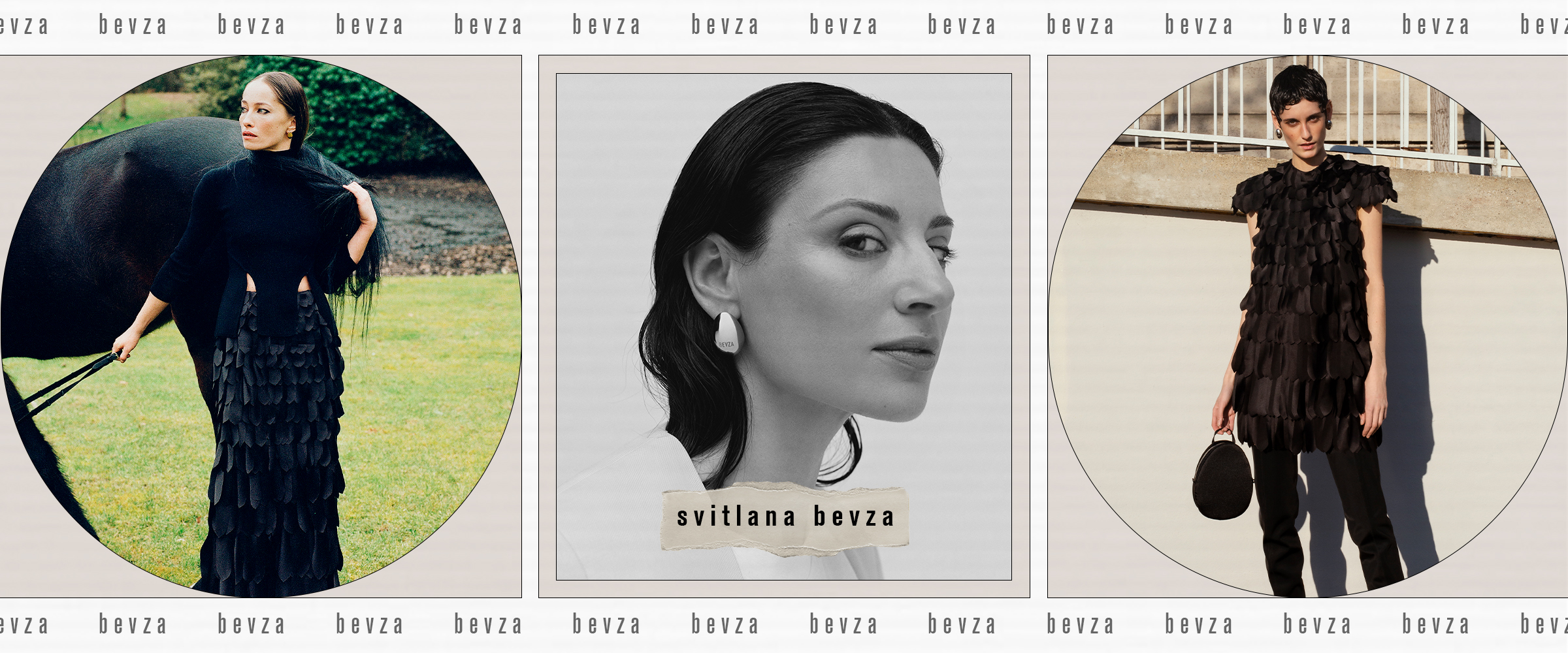
About the brand: One of Ukraine's most notable fashion labels, Bevza is a reflection both of its serenely minimalist aesthetic and the strength of the women who wear it. Ahead, we spoke with designer Svitlana Bevza about her Ukrainian heritage and the power of storytelling through fashion.
You founded Bevza back in 2006—what compelled you to start a brand? And how has the business evolved over the years?
My early childhood dream was to become a fashion designer. I remember being five and doing some sketches with the house and telling my mum that I wanted a "fashion house" because I thought that it was literally a building with a huge wardrobe. Of course, now I've transformed it into an actual business model. I started with a small local atelier in 2006—long before the Instagram and Facebook era (laughing). Since then, I've been able to build the brand to a point where we're stock-listed in some of the strongest retailers in the world (e.g., Bergdorf Goodman, Moda Operandi, Selfridges, Printemps, etc.), showcase the collections for 12 seasons during New York Fashion Week, and dress stars like Dakota Johnson, Gwen Stefani, Sophie Turner, Bella Hadid, Katie Holmes.
How would you describe the aesthetic world of your brand? Who is the Bevza girl?
The brand's aesthetic completely reflects my values and my lifestyle. I'm always aiming to use the collections as a form of storytelling of my roots in a modern way. Ukrainians are still struggling, and for me, it is vital to revive the cultural part, show it to the world, and always stand by the good reputation. My Bevza girl is elegant, and by that, I mean their general approach to life: how they treat themselves, the people around them, and the planet. Our brand contains a sustainable approach as we do as much as possible to produce from recycling and upcycling fabrics with zero waste and create timeless pieces. It might sound cliche because we hear phrases like "timeless" or "old money" so much, but I prefer to create things that last for a long time, pieces that will become the staples of your wardrobe. The Beveza girl always invests in the best quality clothes.
You're originally from Kyiv, Ukraine—how do you feel your heritage has informed how you approach style? How does it influence your collections on the whole?
Initially, my style preference was informed by my teenage years in the late '90s in Ukraine. We had a deficit of everything—information coming from abroad, magazines, styling—so we had to form our vision in a specific way. As a Ukrainian, it is important for me to show the specificity of our cultural heritage through my work. Being a minimalist label, we implement our codes in garments; you can see that reflected in the spikelets in the jewelry pieces as the main symbols of our homeland. Or you can see the braids or the cuts of traditional Ukrainian ethnic garments in our pieces.
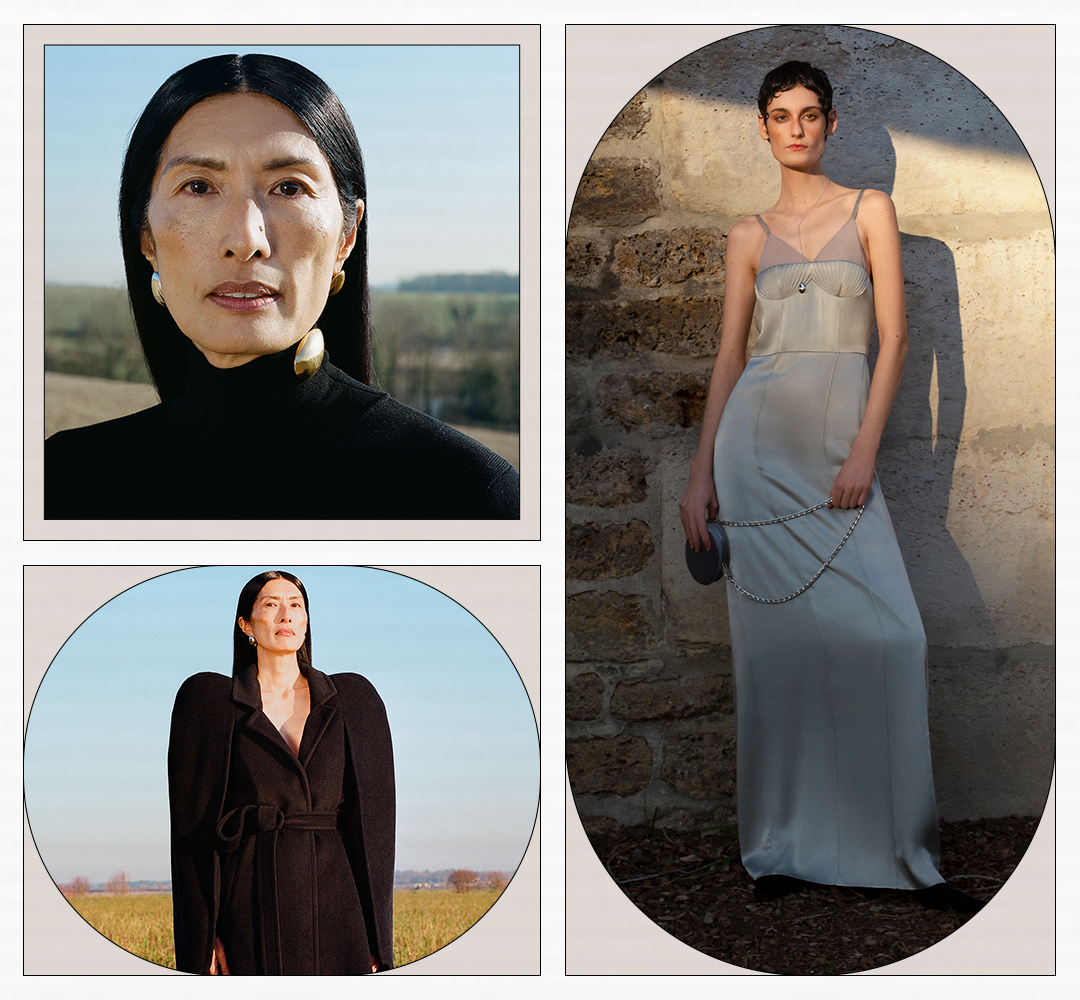
Last spring, you debuted your collection in Paris for the first time after 11 seasons of being at New York Fashion Week. What was that experience like for you, and what was the inspiration behind your fall/winter 2023 collection?
It was extraordinary. I wanted to do a presentation in Paris because I wanted an intimate format to show the concept of the collection, and the pieces themselves needed stillness to be shown. The concept was "birds of hope," which was visibly embodied through jewelry and bags in the shapes of eggs. The collection itself was only black and white to represent the radical question of life and death. White always symbolizes the revival of life and new beginnings, and the color has prevailed in each Bevza collection. So I wanted to show this collection in the form of stillness, a kind of silence, to make you think of these questions. We also did a campaign shoot and video outside Paris with the photographer Masha Cairo, videographer Vlad Dubovskiy, and art director Anton Belinskiy. We wanted it to represent the cycles of life and women moving through them. We showed that through archetypes of youth and the mother and her maturity. We showed that through a woman with wings who finds freedom from being responsible for decisions and her choices. We showed all this beauty and complexity of life, which I am so grateful for.
Fashion can feel so trite compared to all the other tragedies happening in the world, but for you, why do you feel it's been imperative to keep creating clothing in the face of the war? What, if any, has the creative process given you during this time?
For me, the creating process is the feeling that I continue to live, to create something that has its own life. This is part of the drive for me and my team. I don't just create clothes; I create senses. I'm trying to use my voice to show the world there's something good and beautiful about Ukranians. For me, as the creative director, this is one of the main missions and responsibilities of Bevza now.
Obviously, Ukrainians are grappling with the continued war against aggression by the Russians. How, if at all, has the war impacted your business? What challenges have you faced in your day-to-day operations that people might not be aware of?
We are still facing everyday challenges. While answering this interview from my office in Kyiv, there was another raid alert. It happens almost every day in Ukraine. We're checking telegram channels to understand from where the rockets or drones are flying—this has been part of our life since February 2022. The war has changed the lives of all Ukrainians. Of course, it has hit businesses as well. In the first months of the war, we were completely blocked from making deliveries, but luckily, we had support from buyers from all over the world, who wrote to us that they would wait for the orders. They didn't cancel.
Once we restarted our business, we tried to relocate the production to different countries, but many payment systems to and from Ukraine were blocked. Even importing fabrics into Ukraine has been a challenge. But for now, Ukrainians, our clothing producers, and our partners have shown huge resilience. For me, it's essential to continue to produce in Ukraine to show quality to the world. And particularly for our artisan partners, the work is an emotional savior because that means that they continue life, that they're not sitting still and being scared. Our two jewelry partners in Ukraine make our iconic Spikelet pieces, and they recently faced attacks. One of their offices was utterly destroyed, so all patterns, sketches, and molds had to be restarted from scratch. Most of the men producing a lot of our previous collections have been taken away to the army, so now, primarily women are the artisans creating everything you buy from Ukraine.
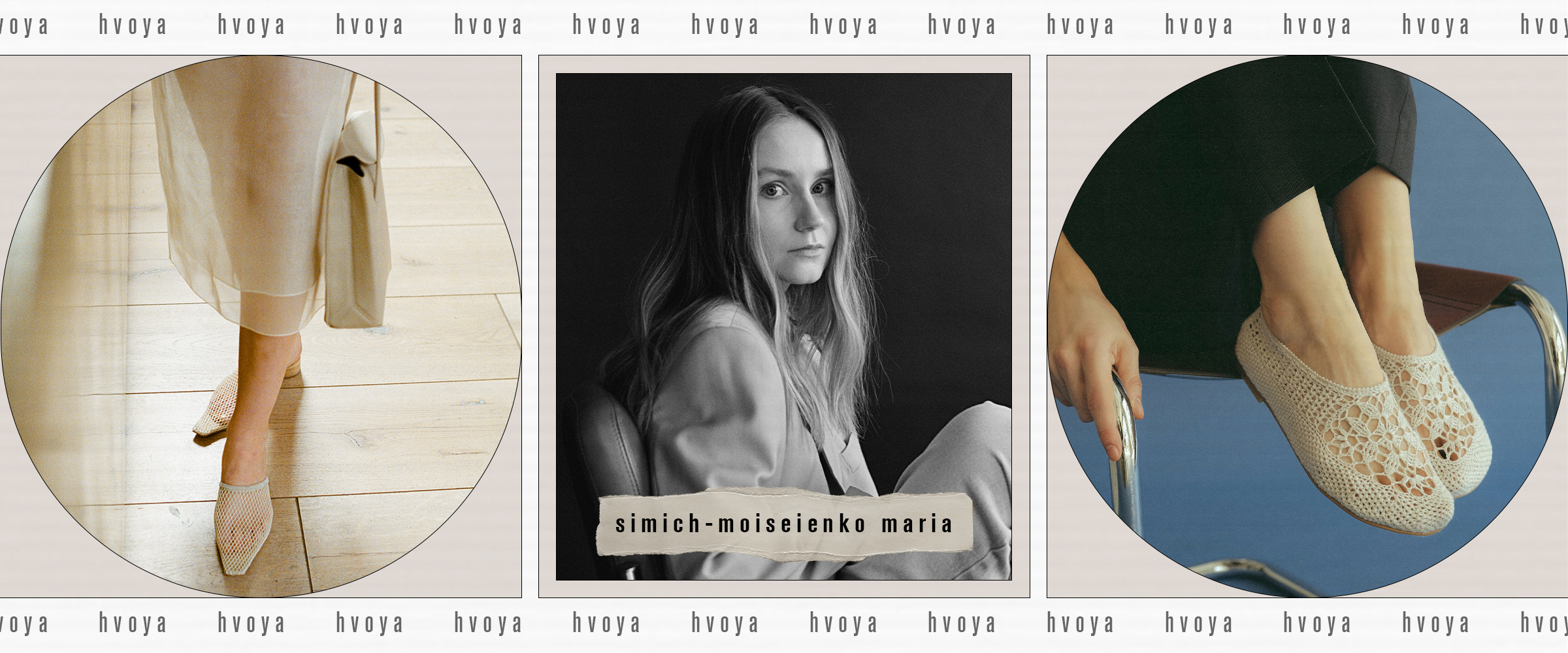
About the brand: Designer Maria Simich-Moiseienko conceived of footwear label Hvóya before turning 19. Today, the brand's eclectic lens on minimal flats and sleek ankle boots has caught international attention, counting Ukrainian First Lady Olena Zelenska—who wore a pair of its flats on the cover of American Vogue—as a fan. Here, we spoke with Simich-Moiseienko about building and maintaining a brand throughout the ongoing war.
For those who are unfamiliar with your work, how long have you been in the fashion industry?
On the eve of my 19th birthday, I decided to pursue my own business. The same year, I opened a small clothing store located in an apartment—nothing fancy. I did it all by myself, and Pinterest provided many ideas for the space. Back in 2015, it was very common to have a small showroom, as many Ukrainian brands began to actively appear after Russia's first invasion of Crimea in 2014. At that time, as a nation, we embarked on a path of paying attention to what was happening within the country and working to recognize its numerous talents and opportunities. For me, a part of that journey was allowing my curiosity and fearlessness to drive me to create shoes. Then I realized I had fallen in love with creating footwear, and Hvóya was born.
Why did you decide to focus on flats and low heels? What was the first pair you launched with?
The first ones were minimalist nude-colored sandals with low heels. Now, I would describe them as boring and definitely in need of improvement. But if it weren't for those sandals, there wouldn't be Hvóya now, so I am still very grateful to them! Perhaps we had shoes with heels for a while, but I soon gave that up based on my own feelings. Personally, I have no need or desire to wear high-heeled shoes. The pace of life and the number of roles in it—designer, manager, mother, wife—are such that no matter how comfortable high-heeled shoes may be, they still end up being uncomfortable. I am not willing to endure discomfort for the sake of slimmer ankles or extra height. That's why I am a 100% customer of my own brand. We don't compromise between comfort and style. Of course, not everyone shares our vision of "beauty."
How would you describe the aesthetic world of your brand? Who is the Hvóya girl?
The brand embodies a blend of intellectual minimalism, eclectic elements, romantic flair, and a rebellious spirit. A Hvóya woman can be anyone—she can have any profession, be of any age, be a mother or childfree, be married, be in an open relationship, or be in a relationship with herself. However, she will undoubtedly be free in her self-perception and self-expression and be liberated from the judgments of others. She chooses herself and grants herself the freedom to be whoever she wants to be, just as she desires today and every day.
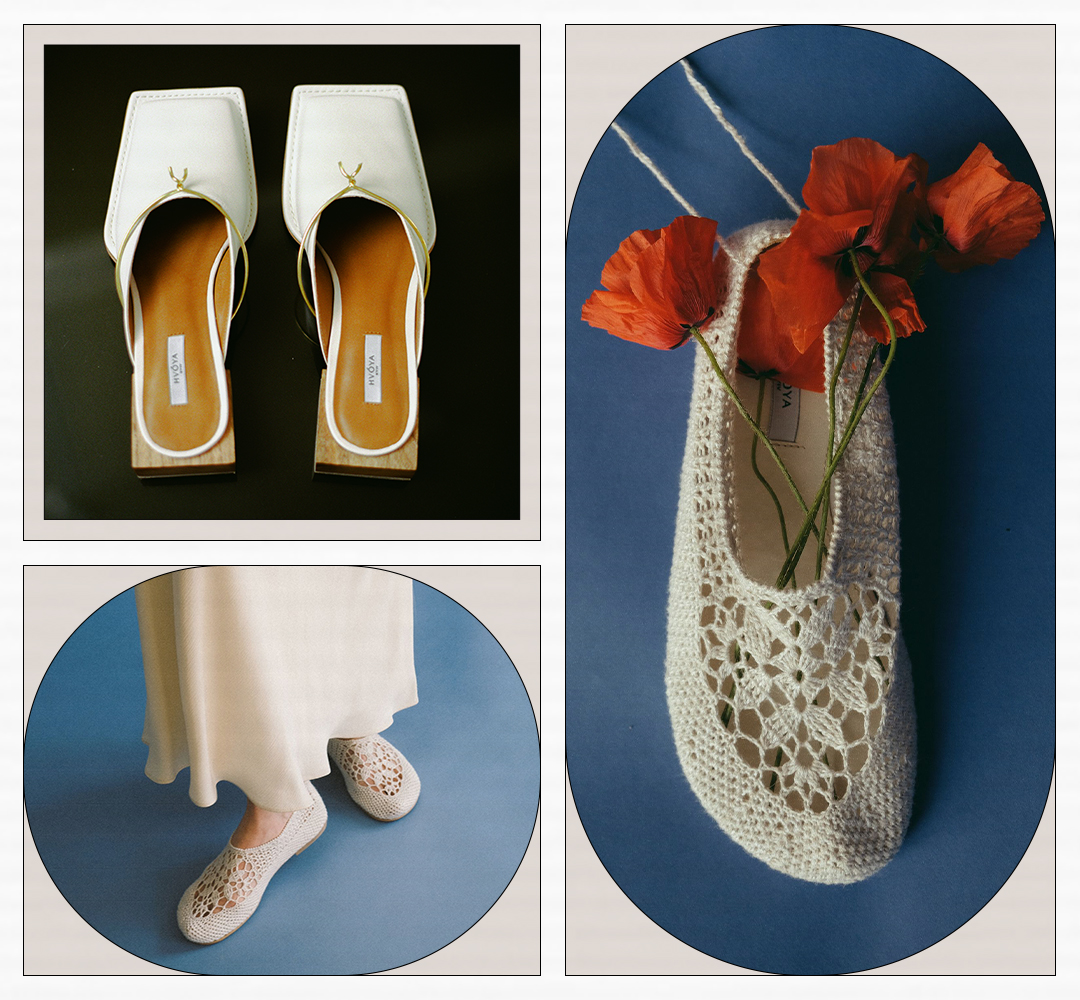
Ukrainian First Lady Olena Zelenska wore a pair of your ballet flats in her American Vogue cover image last year. That must have been a huge moment for you. What did it mean for you to see your shoes representing Ukraine in such a high-profile shoot?
My husband and I were driving in the car when I spotted the cover. We both screamed with joy simultaneously. It was shocking and a major surprise! No one from our team expected such news. In Ukraine, this cover had a significant impact and ignited public discussions. Many didn't perceive Olena Zelenska as feminine. But what more natural stance could there be for a strong-willed woman, the spouse of the country's president, during a full-scale war? In my opinion, everything was very authentic and powerful. By the way, people still come to us and ask to try on ballet flats like the ones on the Vogue cover.
Obviously, Ukrainians are grappling with the continued war against aggression by the Russians. How, if at all, has the war impacted your business? What challenges have you faced in your day-to-day operations that people might not be aware of?
Even before the full-scale invasion began, we discussed with the team what to do in case of war—everyone believed we might stop possibly forever. After February 23, 2022, we did stop for a bit. But two weeks later, we organized a charity sale of all the items in stock with a 50% discount, and the proceeds were donated to charitable funds. Unexpectedly, we sold everything within a few days, which was surprising because who needs shoes and bags when life has reached a standstill? Yet Ukrainian women were buying red shoes, a symbol of their celebration of victory. That's the kind of spirit Ukrainian women possess. Back then, it was incredibly emotionally challenging for everyone. The prevailing thought was that your life had been taken away, and this feeling was universal throughout the country. But now, we have adapted to shelling, explosions, and alarms. Even as I write responses to these questions, in the first hour of the night, an alarm echoes in Kyiv. There's a threat of ballistic missiles. I move my child to the bathroom floor onto a special mattress for such situations, and I carry on. Of course, the business was most affected by the shelling of the energy infrastructure and the lack of electricity. It's pretty simple: No power means no work. Electricity was often only available for a few hours at night. Each district, city, street, or house had its unique schedule of outages; thus, aligning production processes sequentially was exceedingly difficult.
Fashion can feel so trite compared to all the other tragedies happening in the world, but for you, why do you feel it's been imperative to keep creating clothing in the face of the war? What, if any, has the creative process given you during this time?
First and foremost, by continuing, we provide people with incredibly essential jobs in times of uncertainty—this is a clear source of stability. You can hold onto it and know that tomorrow, for instance, everything here will remain unchanged. During times of war, many things lose their meaning for a person. Among them, many individuals question the purpose of their own existence when so many tragedies are happening every day. Work gives a sense of purpose. It involves you. It could be fashion or any other activity. But as long as you know you're needed, you hold on. From this period, we created our most complex collection when, seemingly, everything should have come to a halt. We made our most beautiful collection because the best time for it is right now—this is precisely what our summer collection, Golden Times, is all about.

About the brand: In 2017, designer Mary Furtas turned her love for comfortable and functional partywear into her A-list-adored brand CultNaked, which has had a meteoric rise in the years since. We spoke with Furtas about the brand's evolution, her passion for quality and fit, and the need to persevere throughout the war.
When did you launch CultNaked, and what compelled you to start a brand? How has the business evolved over the years?
I have been in fashion since I was 15. I started working as a fashion photographer, and then I decided to launch CultNaked in April 2018. I started a brand for girls like me who needed a comfy yet sexy wardrobe for everyday life and parties. The first hero product was a skort, and it took off really quickly, conquering the hearts of like-minded women. Also, I was eager to bring something new to the fashion business vision, creating an on-demand model and dismissing seasonal dressing whatsoever.
Since your 2018 launch, you've grown the brand tremendously, dressing A-listers and It girls all over the world. What stands out as your proudest moment to date?
My proudest moment to date is making it into the Vogue Business 100 Innovators list thanks to the structure of CultNaked, which operated on a made-to-order basis. It's honestly wild to think how much the brand has grown.
Apart from the brand's party-ready aesthetic, the pieces are incredibly well-made and surprisingly comfortable. Why is the quality such an important part of your brand? What made you want to focus on perfecting fit and feel?
Comfort and quality are the main factors in the longevity of a product. If the item has a low price per wear and keeps on performing, it's as sustainable as a fashion product can be. We're constantly exploring different eco-fabrics, such as the sea plastic used in the Stardust pieces.
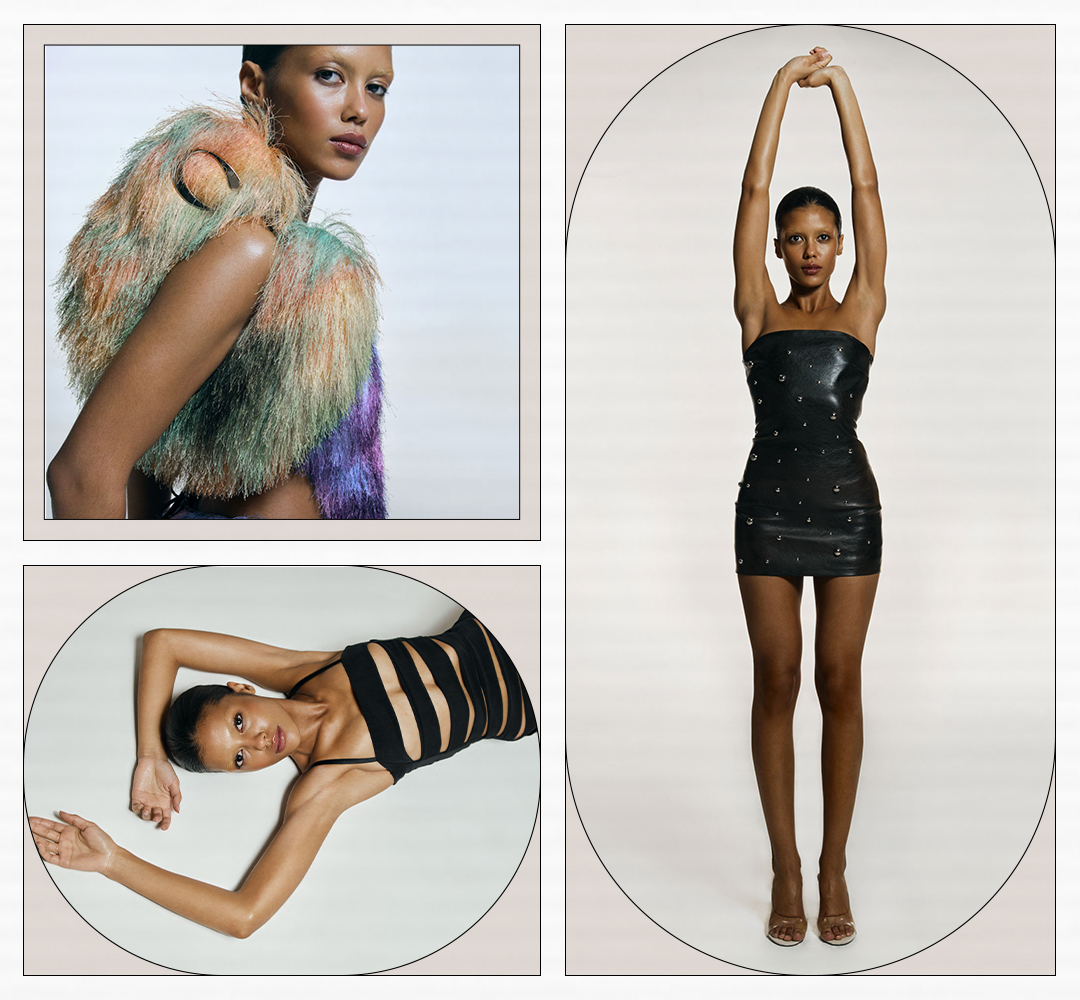
Obviously, Ukrainians are grappling with the continued war against aggression by the Russians. How, if at all, has the war impacted your business? What challenges have you faced in your day-to-day operations that people might not be aware of?
When the war started, I thought it was all over. I had a young baby, and I was lucky enough to move my family over to Europe. But many of my team didn't leave. They wanted to return to work as soon as possible and prove that we could keep our country alive. There have been huge obstacles along the way: power outages, our spaces being bombed, and attempting to ship wholesale and customer orders when borders are closed. But Ukrainians are resilient. We always find a way around the issues. We continue to produce the entire collection out of our Lviv-based atelier. I'm back and forth now between Europe and the Lviv studio, working closely with the team to create collections we're proud of. Somehow, through all of this, the business continues to grow, and people continue to get behind what we're doing.
Fashion can feel so trite compared to all the other tragedies happening in the world, but for you, why do you feel it's been imperative to keep creating clothing in the face of the war? What, if any, has the creative process given you during this time?
Creating is the opposite of destroying. Ukrainians love to create, and we are good at nourishing their homes, plants, projects, kids—basically anything. I keep doing what I do best, and it gives me life. When I'm alive, why not give it all? If not now, when?
How can the international fashion community continue to support Ukrainian creatives through this time?
Russia has tried to destroy our lives, but luckily, they don't have control over that. It has been a very tough ride, and it continues to be for our country. There are regular rocket and drone attacks on our cities. I don't think it's easy to comprehend, even for us living in this nightmare, because it's actually crazy. But I think the best way the world can show support is by not only telling Ukranian stories and supporting small businesses but by not giving a platform to Russians. Ukrainians deserve that respect.

About the brand: Nué Studio is a line of seasonless, investment-worthy partywear. Often compared to jewelry, the brand's signature elevated take on crystal embellishments has earned it a cult following on social media. Designer Viktoria Udina spoke with us about her brand and the power of the global Ukrainian community.
For those who are unfamiliar with your work, how long have you been in the fashion industry? What compelled you to start Nué Studio in 2019?
I've always been into fashion since I was very young. I was passionate about styling and finished a few courses, but I never thought I would have a brand one day. My love for fashion stems from my family, as I used to work in a fan-run textile business, so it was obvious for me to be involved in this sphere. But I had no experience in creating a brand. I only had a financial education and a few specific fashion courses. I had an enormous desire for creativity and self-expression, so I finally warmed to creating a small-drop label. I created only a few statement pieces without a business plan, and it worked. The brand has evolved so much since then, but I'm so happy I went through all the processes on my own, as I can define myself as a designer and an entrepreneur.
Your collections often feature showstopping bejeweled elements that Ukrainian tailors create. For you, how important is it to champion craftsmanship in each of your collections? Is the process of working with artisans a collaborative one for you?
Nué Studio is often compared to jewelry—primarily for the filigree work with rhinestones—and I'm proud of it. Implementing handcrafted techniques is our distinctive feature and the most essential part of my creative process. We source artisans who love to create with their hands, and we want to champion their skills through our designs. There is a definition of "jewelry wardrobe," decorations you wear daily or occasionally. The ethos behind the brand is all about creating a wardrobe of clothes just as precious and essential as jewelry—the recognizable garments, radically changing the perspective of the look, which are intended to remain relevant for years to come.
How would you describe the aesthetic world of your brand? Who is the Nué Studio girl?
The Nué girl knows that she is her greatest treasure. Her personality, intelligence, body, sensuality, and freedom to express herself should be honored. Every day for her becomes a celebration of life—a holiday without a reason nor a destination, uncovering the many different shades of self-love. The brand celebrates the concept of prêt-à-party with scintillating, sexy pieces cut in the signature rhinestone fabric and elegant silk gowns and highlights the handmade techniques. Our designs are all about embracing femininity and sensuality, which is timeless. It's a perfect balance between sparkling and intellectual and emphasizing body positivity.

Fashion can feel so trite compared to all the other tragedies happening in the world, but for you, why do you feel it's been imperative to keep creating clothing in the face of the war? What, if any, has the creative process given you during this time?
It was extremely challenging during the first months of the invasion, as I literally thought I could never create something again. The pressure and anxiety were too high. However, it was all about not giving up on my dreams and what I had already achieved. Creating now is another kind of motivation I have never experienced. Firstly, I have an enormous desire to live and encourage others to work and build. I believe fashion is not only about clothing in its ordinary sense. It always reflects what is happening in society. It's an influential power in raising attention to the world's changes, and it can significantly help if it is targeted at the right things.
Obviously, Ukrainians are grappling with the continued war against aggression by the Russians. How, if at all, has the war impacted your business? What challenges have you faced in your day-to-day operations that people might not be aware of?
The war has tremendously impacted the business. Sometimes, I look back, and it's beyond my mind how we managed to maintain all the processes and even evolve the brand since the invasion started. There have been many challenges I can name: working under air-raid sirens, constant anxiety about your physical well-being, power outages during the autumn/winter seasons when all your production depends on electricity, inability to receive your supply materials in time due to logistic delays, and so many more. But no matter what, I can't betray my dream and the people working with me. I feel responsible for my employees and everyone involved in the brand. I admire Ukrainian entrepreneurs working in these challenging times. Building the businesses now is an excellent example of our fortitude, and it provides solid mutual support for each other during this time.
How can the international fashion community continue to support Ukrainian creatives through this time?
Globally, raising more conversations about Ukraine is essential, but it can't end with discussing how the community can help the creatives. It's about urging the industry to take action by supporting and donating. That help could come in the form of grants for young creatives and students, especially those who fled their homes. But it could also provide specialists to help refugees find well-paid jobs in the countries where they are trying to start a new life. It also can come in the form of supporting Ukrainian businesses by offering more simplified terms of cooperation. On a more practical level and specifically for the shoppers, I would ask for more patience and compassion regarding production and logistics as we continue in the face of challenging circumstances.
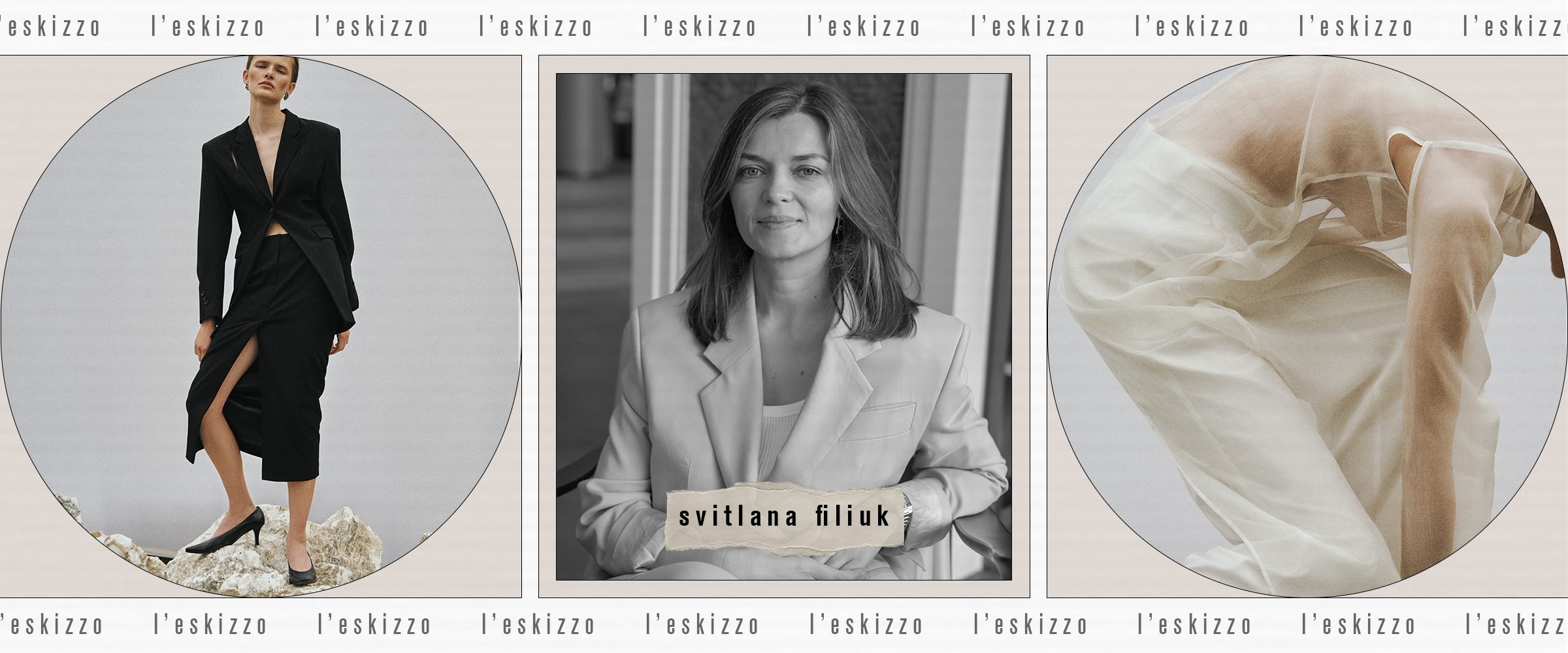
About the brand: Founded with the goal of providing suits for the modern woman, L'eskizzo is a study in contemporary tailoring for both corporate and fashion-person customers. We spoke with designer Svitlana Filiuk about championing Ukrainian tailors and dressing the modern "power woman."
You founded your label in 2015—what compelled you to start a brand? How do you see the brand continuing to evolve?
Before entering the fashion world, I worked in corporate business. I would go to the office every day and have regular meetings with customers where I needed to look professional, but I wouldn't say I liked the outdated gray suits that the industry offered at the time. Being that so many inspiring entrepreneurs surrounded me at the time, that made me believe anything was possible and that I could create my own company. I decided to launch L'eskizzo as a capsule of tailored blazers as a new approach to officewear. Since then, we've been able to expand into ready-to-wear, but we remain focused on creating structured clothing that lends itself to becoming capsule-wardrobe items.
Speaking of evolution, the brand's initial focus was on providing suits for women, but it's since expanded into offering more capsule-wardrobe items. What did you feel was missing from the market before you expanded into it? What, in your mind, constitutes an item being a great staple?
While suiting remains our focus, we realize that our clients would come to us first to choose the suit for their special occasion, and then they would ask for complementary capsule items from us. That pushed us to expand past blazers and create a main product line, including accessories. For us, a great staple is something that has both masculine shape and feminine details in it, is of exceptional quality, is made of natural fabrics, and has complex detailed work—we've woven that into L'eskizzo's brand DNA.
How would you describe the aesthetic world of your brand? Who is the L'eskizzo girl?
If I were to summarize it shortly, it would be "power dressing." Our L'eskizzo girl is busy. She has a career, whether it be in a corporate environment, a creative startup, or as an entrepreneur. She knows the power of dressing and uses clothes to make an impression.

Being that tailoring is such a central part of all of your collections, what importance does the team place on championing Ukrainian tailors? How have you been able to continue to support the artisan community through your work?
Our tailoring clothing is complex, and no production can be outsourced while keeping the same quality. Thus, we created our production process, which is led by a community of Ukrainian professionals who produce complex blazers one by one, ensuring that only one artisan is responsible for the full chain of work. We set it up this way so that we help develop the knowledge and experience for our employees, and they, in turn, share it with others. For us, it's so important for our work to champion tailoring and combining both masculine and feminine elements, so we've ensured our team has experience in both men's and women's suits. As an example, there are many oversize suits on the market, where the shoulders are slightly loose, but we worked with our tailors to implement a technique inspired by men's suits from the '90s that allowed the fit of our blazer to be more fitted. It's this collaboration that allows our pieces to shine.
Obviously, Ukrainians are grappling with the continued war against aggression by the Russians. How, if at all, has the war impacted your business? What challenges have you faced in your day-to-day operations that people might not be aware of?
That could be a whole separate story. We stopped all activities for several months when the full-scale war started, and all the team members moved to their hometowns, where it was safer for them. After some time, we restarted remotely by sending pieces by post. It must be mentioned that it was mainly the team's request to restart, as it helped them to distract from constant bad news. There were attacks on electrical infrastructure. We didn't have electricity during the winter, and we hardly could produce anything, just separate pieces on demand. But despite how much the fashion industry has impacted her, we are fighting to continue and even develop further. Looking at what our army is doing by protecting us, we have no right to stop.
Fashion can feel so trite compared to all the other tragedies happening in the world, but for you, why do you feel it's been imperative to keep creating clothing in the face of the war? What, if any, has the creative process given you during this time?
Not everyone can go to fight in the war. But we feel that everyone has to contribute: pay taxes, support employees, help them remain safe and have the means to live, and donate, donate. But behind the physical needs are also psychological needs, both of the team and the clients. Creativity for the team and nice clothes for clients make them feel more "normal," and that means that we contribute to the mental health of our Ukranian community. Moreover, we feel that creativity is even stronger during the war. We feel the power to create stronger pieces, and we see that those styles are well-accepted by customers around the world.
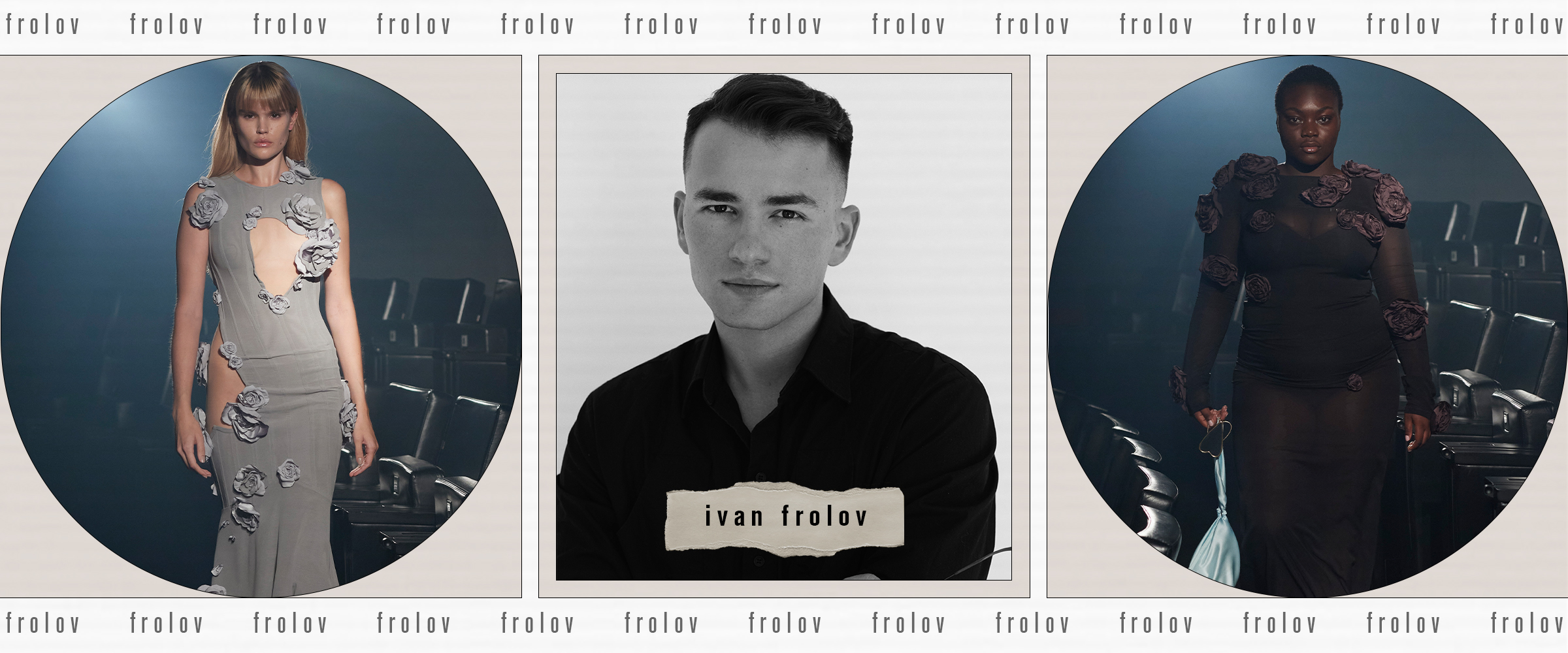
About the brand: Having been worn by some of the buzziest names in the music industry, celebrity-adored brand Frolov toes the line between playful and subversive with its recognizable heart-shaped cutouts. We spoke with the label's designer Ivan Frolov about the brand's influences.
You founded Frolov in 2015—what compelled you to start a brand? How has the business evolved over the years?
I truly believe that designing has always been my calling. I love storytelling and exploration, and this is an absolute natural culmination of my desire to convey certain messages to the world via fashion. For me, it's never been just about clothes. I always considered it a mouthpiece that helps tell stories and share discoveries that impact society as a whole, which is why social responsibility has always been an essential part of our brand. We went through a major financial crisis, COVID-19, and are still in an ongoing war, but we keep working, showing the world our resilience and strength.
You've dressed some of the buzziest stars of the moment, including Beyoncé, Dua Lipa, Sabrina Carpenter, and even Sam Smith—what has it been like for you to see your work out in the world? When you are working with a celebrity, is there at all any collaboration through the creative process?
Every time a celebrity wears our pieces, it becomes a massive "dream come true" moment for our team and even our country. Unfortunately, many such successes for the brand occurred during the Russian full-scale invasion of Ukraine, and right now, the only dream we have is a total victory for our country in this war. Still, we see it as a fantastic supportive act and an opportunity to show Ukrainian culture and fashion to the world. Back at home, any reason to be proud of our brands is fundamental, as it acts as tremendous moral support for the nation. For us, it's such a moment of pride, and it would never happen without my wonderful and hardworking team.
You've spoken about how you're often drawing inspiration from the BDSM and travesti subcultures in your work. For you, what role can clothing play in pushing how we collectively view the gender binary?
I was always inspired by how people express themselves in the most different ways, exploring themselves and radiating their personalities and inner beauty. The discovery of your own sexuality lies in the core conception of our brand, and our items are aimed to help with those discoveries. Indeed, my first collections were very much inspired by BDSM culture and cinematography, which greatly enhanced its emotional impression. For example, Liliana Cavani's The Night Porter was a huge inspiration to dive deeper into this theme and aesthetics too. My visit to the Sitges Carnival sparked another collection dedicated to transgender culture. I was captivated by how beautiful and interesting the perception of the human body and clothes can be. Using fashion as a global platform, we're establishing a mechanism where our collections create conversations around essential themes such as gender equality and human expression.
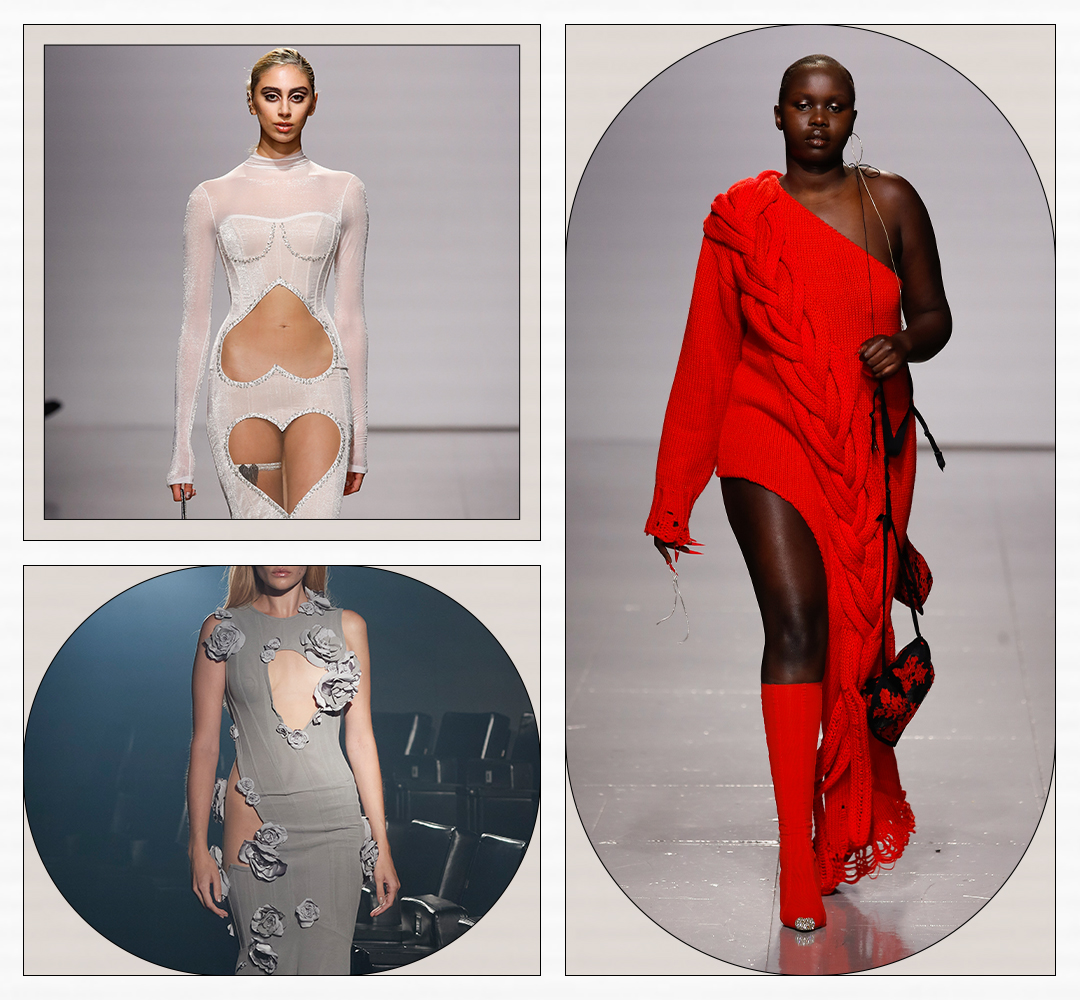
Obviously, Ukrainians are grappling with the continued war against aggression by the Russians. How, if at all, has the war impacted your business? What challenges have you faced in your day-to-day operations that people might not be aware of?
The Ukrainian army right now is defending everyone from the biggest terrorist in the world, and we're very thankful to everyone abroad for their support. Without it, we'd never be able to stand so strong for such a long time. It's not just about Ukraine but also about our company in particular. We received massive support from the fashion community, who helped us to continue showcasing the brand on all international platforms and, therefore, continue our work. Despite that, we're still facing the difficulties any other non-Ukrainian brand in the world doesn't face, from the absence of air connections that transform into logistics difficulties up to basic fear of missile attacks. We survived the most brutal winter in our lives with tremendous electricity issues, and the following winter will likely be the same for us too. But we've learned to fight willingly. Nothing can stop us from creating and doing what we do best. This is our reality now, and we're hardened by it. It's vital for us to continue our production here, build our company here in Kyiv, and support our country as much as we can.
Fashion can feel so trite compared to all the other tragedies happening in the world, but for you, why do you feel it's been imperative to keep creating clothing in the face of the war? What, if any, has the creative process given you during this time?
I never thought fashion was a trivial thing, but on the contrary, I feel it's a powerful industry that brings people together and has a big educational impact on many who can pass it on. It covers art, cinematography, and society as well. That's why it's imperative for us to show that we, as a fashion brand, didn't stop during the war. At first, our primary focus was on helping out and supporting volunteer initiatives and creating our own charity project, Frolov Heart. Now, we're doing it in parallel with our main line of work and seasonal collections and drops. But we made sure the war didn't affect our brand's identity. What really matters is highlighting our strength. No matter the war, we keep doing what we're best at—corsetry pieces, beautiful evening outfits, and custom looks. That's where our real power lies. Even during the war, we can still show our best work and are very proud of it.
How can the international fashion community continue to support Ukrainian creatives through this time?
I want to thank everyone worldwide for supporting us—for all the big moves and small acts of kindness. You are why we're holding the fort against the Russian army. As Ukrainians, we're giving it all. Hopefully, we'll soon celebrate this win together. So I'm just going to ask: Keep the conversation about Ukraine ongoing, support our talents, and purchase Ukrainian products, brands, and art. It's not just about our economy; it's about our survival. The war isn't over yet, and we need to keep feeling the world standing strong beside us.
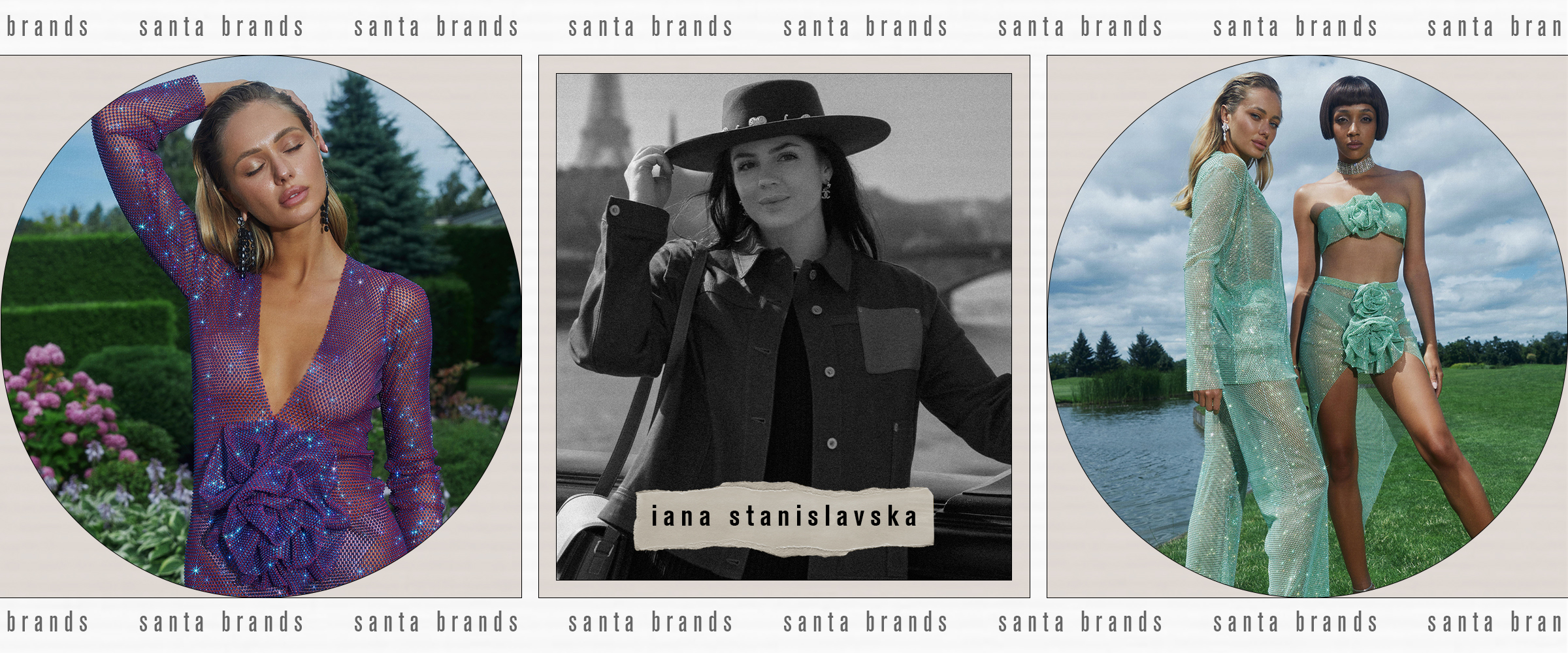
About the brand: Kyiv-based label Santa Brands has become an Instagram sensation for its nighttime aesthetic based on a signature sheer crystal fabric. Designer Iana Stanislavska spoke with us about pivoting from law to fashion and running a small brand throughout the war.
When did you launch Santa Brands, and what compelled you to start it? How has the business evolved over the years?
Before launching Santa Brands, I had a successful career as a lawyer. But my creative energy needed to be addressed, so I embarked on a new, exciting journey of launching my own label in 2019. What started as a small Instagram shop gradually became a full business venture. Now, we're sold in stores all over the world, from Ukraine to the United States, and the list of clients keeps growing daily.
Where does the brand name come from? Is there a story behind it?
I've named the brand after my daughter, Santa—my greatest source of motivation and energy. I wanted to create something that would make her believe it's always a great idea to follow your dreams. Setting an example for her by being a woman in business is something that makes me work harder every day.
Your brand is based in Kyiv—how do you feel your heritage has informed how you approach style? How does it influence your collections on the whole?
I believe that our dresses reflect the spirit of Ukraine and Ukrainians who try to remain positive, keep the fire inside, and enjoy their life even in the darkest times.

Obviously, Ukrainians are grappling with the continued war against aggression by the Russians. How, if at all, has the war impacted your business? What challenges have you faced in your day-to-day operations that people might not be aware of?
The Russian invasion has been a surprise for me, as for anyone else. The war has led to a number of challenges, such as undermined logistics, power outages, and constant missile attacks, putting pressure on the production process and supply. Still, we have managed to adapt, and now, our production remains active even during power outages, as we have our own reserve power supply. In addition, we have established new transportation routes that ensure the fast delivery of goods, even under uncertainty.
Fashion can feel so trite compared to all the other tragedies happening in the world, but for you, why do you feel it's been imperative to keep creating clothing in the face of the war? What, if any, has the creative process given you during this time?
Fashion is the same business as many other industries. My business is important for my country, as I employ many people, pay taxes, and promote Ukraine. So when creating new dresses, I feel I do it to support my country in the way I can. In addition, I believe it's important to remain a role model for female entrepreneurs in Ukraine who are seeking an opportunity to build their careers amid such uncertainty.
How can the international fashion community continue to support Ukrainian creatives through this time?
Close ties with Russia if you want to be supportive. Fashion brands and beauty conglomerates are paying an enormous amount of taxes to the Russian government—stop fueling their war machine. It's that simple.
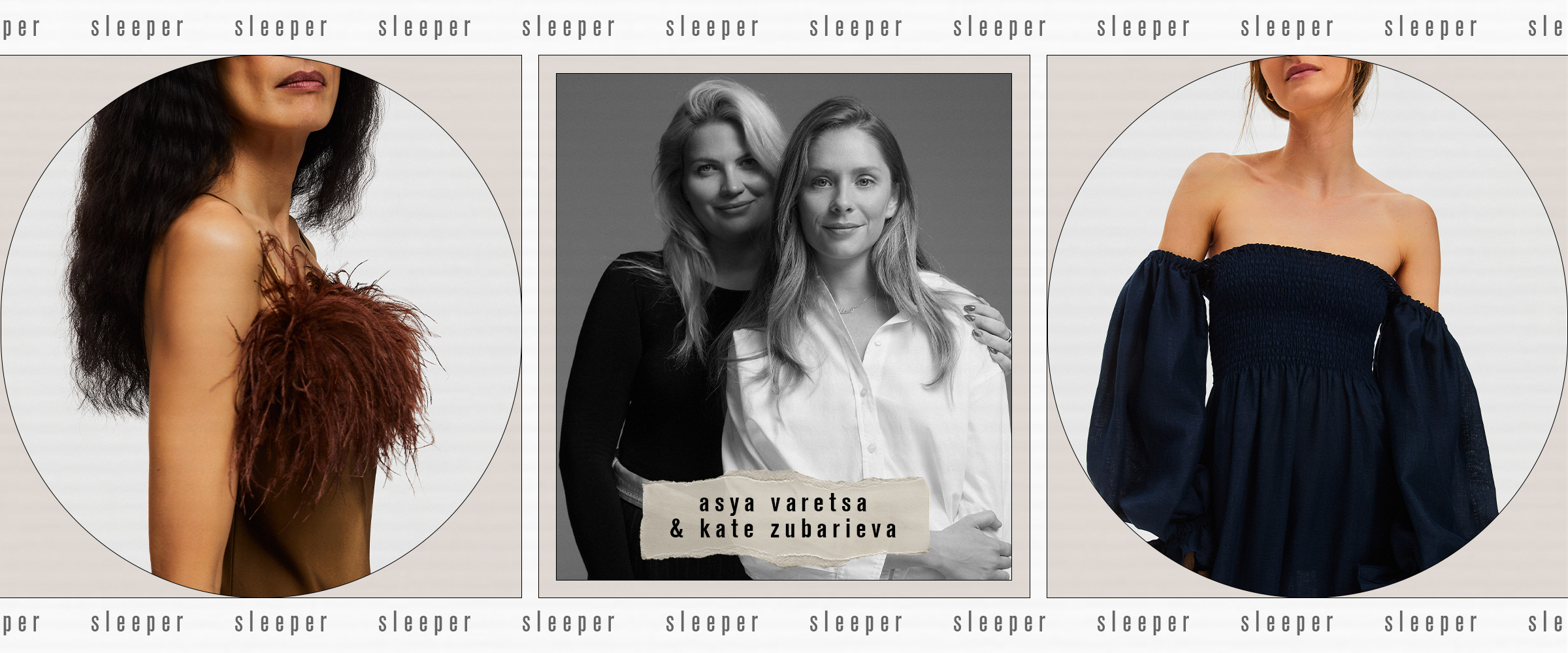
About the brand: Fashion-insider favorite Sleeper was founded in 2014 by former fashion editors Kate Zubarieva and Asya Varetsa. Its internet-breaking feathered pajama set launched it to cult-loved status, and shoppers keep returning for both day- and nightwear. We spoke with the designers about their biggest milestones after nearly a decade of Sleeper.
When did you launch Sleeper, and what compelled you to start a brand? How has the business evolved over the years?
Kate Zubarieva: We founded Sleeper in Kyiv, Ukraine, in 2014, at the height of the Revolution of Dignity and the subsequent war that unfolded in the country. We achieved some high points in our careers, so our experiences pushed us to create something new, something that belonged to us.
Asya Varetsa: Back on Christmas Eve of 2013, we were watching Curly Sue with our friends, and Kelly Lynch, who played Grey Ellison, was wearing a striped robe during one of the scenes. Kate and I exchanged glances and simultaneously decided that was a truly cool look. That night, Kate had a dream where she was standing in the middle of a pajama factory. In the morning, she called me to propose starting a homeware company. Six months later, Sleeper launched its first collection. In January 2015, Franca Sozzani, the late editor in chief of Vogue Italia, named Sleeper as her favorite brand of the month.
KZ: Since then, Sleeper has evolved from a collection of daywear pajamas handcrafted by the small atelier in Kyiv to the international brand that now also carries footwear, outerwear, athleisure, and beyond.
Despite its name, your clothing is widely regarded as much more than simply sleepwear. Why did you decide to start with a line of pajamas as opposed to any other clothing category?
KZ: When we started Sleeper, finding elegant and chic nightwear outside the luxury end of the market was challenging, never mind the loungewear that could be worn outdoors. We've decided to create the garments for ourselves—comfortable, good-looking, affordable, and filled with effortless elegance.
AV: Today, Sleeper suggests much more than sleepwear. Sleeper takes the feeling of comfort and the sense of home and weaves them into beautiful garments that are easy to wear. We have a small but authentic shoe line. We create accessories and swimwear, and this year, we introduced outerwear. Also, for the fall/winter 2023 season, Sleeper will unveil its first collection of pieces made from warm fabrics, making a signature feathered "Sleeper look" chilly weather–friendly. The line is represented by blazers, maxi dresses, quilted jackets, ponchos, and a sweater created for a frosty season. Our new shoe style is mitten boots inspired by our childhood.
Sleeper was an instant hit right out of the gate, and you were both named in Forbes's 30 Under 30 in 2019. What does success mean to you now, and is it different from what it meant to you in the brand's earliest days?
KZ: Success has never been the aim, but it's the sign that everything we do is in demand. That means that we can grow bigger and faster, and more people in the world can discover beautiful garments made by Ukrainian craftswomen.
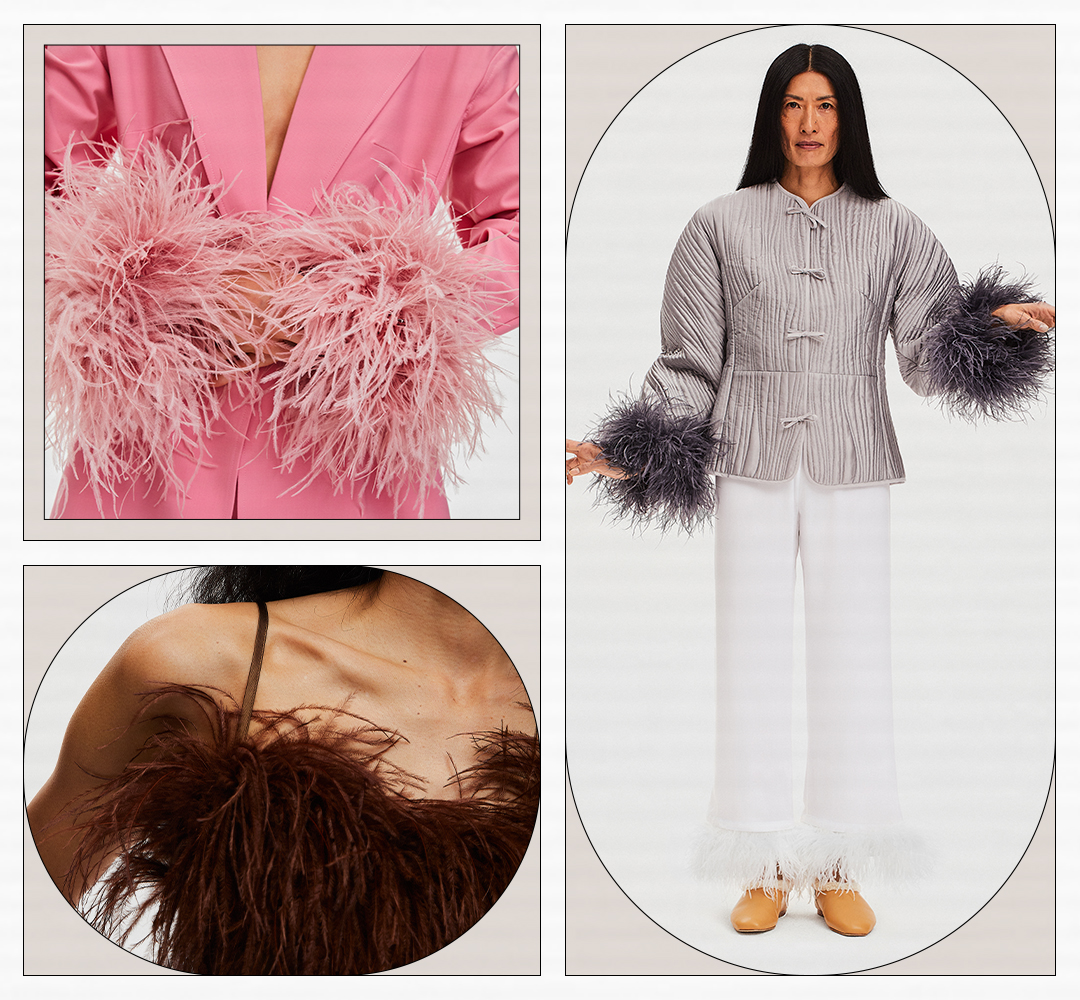
Are you both originally from Kyiv? How do you feel your heritage has informed how you approach style? How does it influence your collections on the whole?
KZ: I was born and raised in Kyiv, with a short-term experience of living in Pyongyang, North Korea, in my childhood. I believe my origin and my roots are a huge source of inspiration and an essential part of my identity. I'm proud to be a Ukrainian. Ukrainians are truly talented, hardworking, and brave artists with strong spirits, a tender love for nature, and a deep connection to their roots. Our outstanding cultural heritage makes our nation authentic and clearly manifested. Undoubtedly, I feel it inside, and this is the thing that has a significant effect on my worldview.
AV: I spent my childhood in Crimea, which definitely influenced me. The seaside, beautiful landscapes, and warm-hearted Ukrainian people imprinted in my heart. Paying tribute to our ancestors, we use 100% linen fabrics, which formed the basis of the clothing of Ukrainians during the centuries. The cut details for our core styles, such as Linen Loungewear Dresses and Romantica Linen Dresses, are also borrowed from Ukrainian bottom dresses.
Obviously, Ukrainians are grappling with the continued war against aggression by the Russians. How, if at all, has the war impacted your business? What challenges have you faced in your day-to-day operations that people might not be aware of?
AV: We had to rebuild our business processes and supply chain. Before the war, our headquarters were in Kyiv; all our seamstresses and the whole production were there. We had to temporarily relocate the production for the first year of the war and take care of the employees and their families. Fortunately, we have restored our Kyiv production, and our craftswomen continue creating beautiful garments there. And now, our Sleeper team is scattered all over the world. We coped with all the difficulties and expanded even more. We are constantly giving back to our community and supporting the Ukrainian economy and those needing help. That's why we've launched the Sleeper Foundation, a charitable fund that aims to help civilians cope with the consequences of the war. An essential part of the fund's activity is devoted to the Red Seam project—we produce pajamas for Ukrainian military hospitals. We provide our heroic defenders with the comfort and care they deserve.
Fashion can feel so trite compared to all the other tragedies happening in the world, but for you, why do you feel it's been imperative to keep creating clothing in the face of the war?
KZ: It's so important to keep doing the usual things during the war. It's how people deal with the stress and defeat their trauma. Our Ukrainian women want to be beautiful, so they make manicures in the bomb shelters during the air-raid alert. They want to dress up—it's fantastic. We can't let them down.
AV: Moreover, fashion is one of the industries the Ukrainian economy stands on. We create workplaces, we pay salaries and taxes, and it's our duty to keep going.
Anna is an NYC-based senior fashion editor who has been a member of the Who What Wear team for over seven years, having begun her career in L.A. at brands like Michael Kors and A.L.C. As an editor, she has earned a reputation for her coverage of breaking trends, emerging brands, luxury shopping curations, fashion features, and more. Anna has penned a number Who What Wear cover interviews, including Megan Fox, Julia Garner, and Lilly Collins. She also leads the site’s emerging travel vertical that highlights all things travel and lifestyle through a fashion-person lens.

